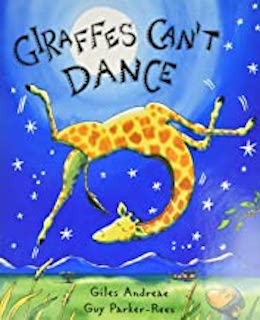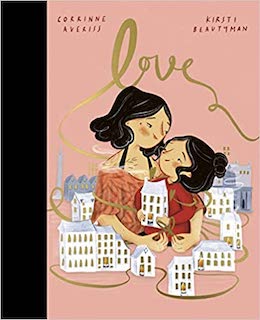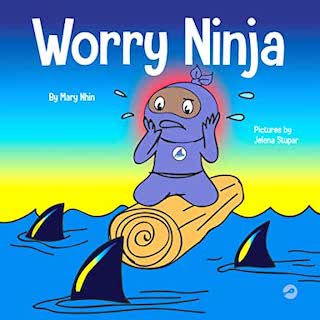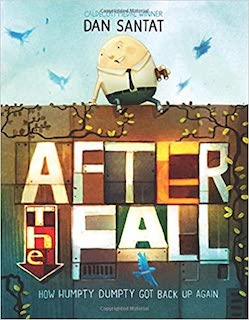Books for School-Aged Children About Dealing with Anxiety
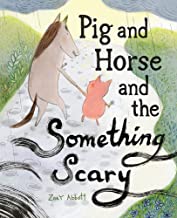 Pig and Horse and the Something Scary
Pig and Horse and the Something Scary
Zoey Abbott
Pig wakes up one morning feeling out of sorts so she decides to visit her friend, Horse. Horse suggests a series of activities that might make Pig feel better but in the end, they don’t. Finally, Horse suggests that they invite “whatever-it-is” to tea. After preparing the tea, Pig begins to let out her anxieties - the night, being alone, and a bedtime story. Pig and Horse feed the anxieties food they made but they also sing their favorite song, hold hands, and play a trick. The anxieties eventually become very small or go away. The illustrations that accompany the text are very sweet. While a nice read-aloud, generally, there is little here to help readers understand how to cope with their anxiety. (RLR)
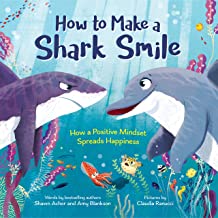 How to Make a Shark Smile: How a Positive Mindset Spreads Happiness
How to Make a Shark Smile: How a Positive Mindset Spreads Happiness
Shawn Achor , Amy Blankson, and Claudia Ranucci
How to Make a Shark Smile teaches children the power of being positive. Ripple the dolphin moves into a new aquarium. The other animals are gloomy. Ripple finds a blowfish and they play a staring game and end up laughing. They spread this excitement to the rest of the aquarium until a shark comes along and tries to ruin the fun. Ripple plays the game with Shark and they end up laughing. From then on, there is always fun in the aquarium. The back of the book has multiple ways to have a positive mindset and ways to choose happiness. This book is ideal for adults trying to teach children how to not let others take away their joy. (Recognizing emotion)
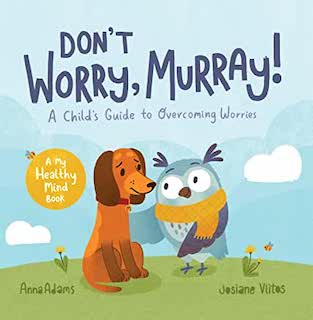 Don’t Worry, Murray!: A Child’s Guide to Help Overcome Worries
Don’t Worry, Murray!: A Child’s Guide to Help Overcome Worries
Anna Adams and Josiane Vlitos
Murray the dog is worried about going to his new school. What if he gets lost going to class? What if he doesn’t make any new friends? Murray’s friend, Hoots takes Murray to Worry Hill where there are several sign posts about how to deal with one’s worries, including imagining meeting new friends, finding your battle cry, deciding if your worries are fact or fiction, talking to your worry, and breathing. Murray’s worries become manageable and he’s ready to go to school. The bright, friendly illustrations complement and convey the narrative in a helpful manner. The coping strategies in this book are different from many others in the field but no less useful. Highly recommended for use with children in a one-on-one manner such that they can be given time and space to practice what they’ve read. (RULER)
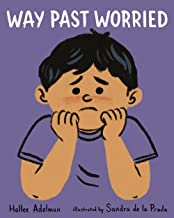 Way Past Worried
Way Past Worried
Hallee Adelman and Sandra de la Prada
Brock is getting ready to go to his friend Juan’s superhero birthday party but finds out his brother isn’t going with him, which makes him feel worried. His day seems to get worse from there, making him feel way past worried. Brock’s father tells him to take three deep breaths so he does that when his worry is greatest. While he’s hiding at Juan’s party, Brock meets a girl who is also taking three deep breaths. Brock learns that this girl, Nelly, is worried because she’s just moved to town and doesn’t know anyone. Brock and Nelly talk about why they're both worried and they begin to feel better as they rejoin the party and have a great time. Breathing and talking it out are the take-home messages from this colorfully illustrated book. Great for a read aloud or individual read. (RULR)
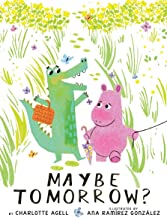 Maybe Tomorrow?
Maybe Tomorrow?
Charlotte Agell and Ana Ramirez Gonzalez
Maybe Tomorrow is a sweet story about two friends, Elba and Norris. Elba drags around a heavy block that keeps her from wanting to do many things. Norris always dances where he goes and butterflies surround him. Through patience and empathy Norris helps Elba carry her block and they start to do activities together. Eventually, Elba shares her feelings about losing her friend Little Bird. Because she shared her burden with Norris, Elba’s block became smaller and lighter. This book will require adult support for young readers due to the heavy symbolism. Themes of loss, friendship, kindness, and empathy will help children grasp the weight loss can cause. (RUR)
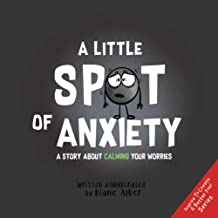 A Little Spot of Anxiety
A Little Spot of Anxiety
Diane Alber
A Little Spot of Anxiety is an excellent book to begin a discussion of coping strategies with younger kids. Using simple and colorful illustrations, A Little Spot of Anxiety presents kids with two specific techniques to help deal with surprise bouts of anxiety. The first technique asks kids to use a finger from one hand to draw a line between the tip of their finger and their palm connecting their imaginary peace and anxiety spots while reciting a short mantra to refocus their thoughts and energy. The second step in the process involves blowing away anxiety while reciting a second quick mantra. The most useful part of this book occurs toward the end when kids are presented with common, real-life scenarios that might cause them to feel anxiety. The two techniques coupled with verbal mantras would be a solid addition to a student’s bag of coping skills. (RULER)
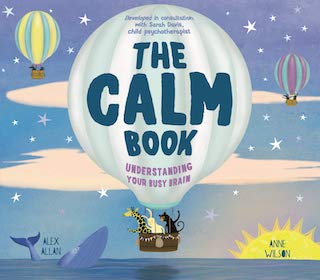 The Calm Book: Understanding Your Busy Brain
The Calm Book: Understanding Your Busy Brain
Alex Allan and Anne Wilson
The Calm Book was written in collaboration with a child psychotherapist, making it a reliable source for mindfulness strategies to employ in the home or in your classroom. There isn't much to the storyline as this is mainly a how-to book. I will say, the pages have very difficult vocabulary and A LOT of words. The pages seem extra busy and I think the text could definitely be pared down making it more accessible to younger readers. The illustrations are really the star of the show in this book. They are colorful and contain a variety of animals completing the various tasks that are described on the page. I would use this in older elementary classroom, but probably would not recommend to the younger kids. (RULR)
Giraffes Can't Dance
Giles Andreae and Guy Parker-Rees
In Giraffes Can't Dance, Gerald the Giraffe is so excited for the Jungle Dance and gets ready to take his turn dancing until everyone begins laughing at him and telling him he can't dance. Gerald became sad and started to believe that he couldn't dance until Cricket took the time to encourage Gerald to find a dance that worked for him and let him be his own unique self. So with some perseverance and encouragement from Cricket, Gerald showed everyone that giraffes CAN dance and dance well! This story is an engaging story for school aged readers that teaches the importance of being unique and finding the best way to do something. Gerald's story is one that can easily be related to many tasks young readers may face and can be used to build empathy and perseverance in readers. (RR)
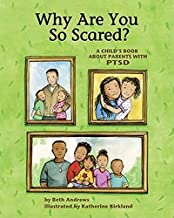 Why Are You So Scared?
Why Are You So Scared?
Beth Andrews and Katherine Kirkland
Why Are You So Scared? is a book for children of adults with PTSD. It was written by a social worker and explains PTSD and the way parents may act or react. While there is no plot, it is very informative for children in this specific demographic. A good way for adults to explain to children what is going on with their parents. (RULER)
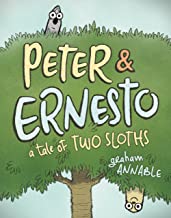 Peter & Ernesto: A Tale of Two Sloths
Peter & Ernesto: A Tale of Two Sloths
Graham Annable
Peter and Ernesto is an adorable graphic novel about two very different sloths who are best friends. Peter is shy and content to live out his life happily in his tree and Ernesto is vivacious and wants to see every piece of the sky. Ernesto embarks on an epic adventure through jungles, crossing bridges, swimming through seas and traversing deserts. Meanwhile, Peter is worried that something terrible has happened to Ernesto, so he goes off in search of him and in doing so, expands his horizons and sees some of the world. Finally, Perter and Ernesto are reunited and learn about each others' adventures. The artwork in this graphic novel is really cute and the story is interesting and unique. While this story is deemed N/A for dealing with anxiety, I loved the storyline and purchased the book for my school library. You could use this story to teach about facing fears and meeting challenges head on. (Does not reflect RULER)
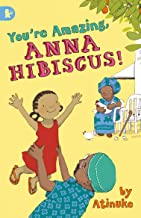 You're Amazing, Anna Hibiscus!
You're Amazing, Anna Hibiscus!
Antinuke
You’re Amazing, Anna Hibiscus! is a sweet young reader chapter book about an African family who loses their grandfather. Anna deals with her grief by being mean because she wants others to feel sad too. She is mean to her friend and feels responsible when he runs away. She helps find him and owns up to her mistakes. She also helps her little brothers and the rest of the family cope with their grief by telling stories about their grandfather. This is a beautiful story that manages the complicated feelings of grief. It takes multiple chapters to cover the nuance of dealing with loss. This is an interesting, entertaining story for independent readers and families. (RULER)
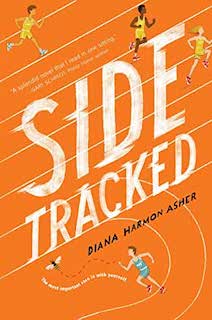 Side Tracked
Side Tracked
Diana Harmon Asher
Sidetracked is an engaging story that celebrates Joseph's journey as he navigates middle school. Joseph not only is trying to manage middle school life, he also has to deal with ADD and having different phobias that causes him massive amounts of anxiety. After some encouragement from his resource teacher, Joseph joins the newly formed cross-country team, only to find that one of the main causes of his anxiety, his bully, is on the team as well. With the help of his new teammate, Heather, Joseph works to build lasting relationships with his teammates that will help him overcome any obstacle that he has to overcome. Joseph's journey is a celebration of pushing through challenges to come out stronger. This book would be great to read with middle school students, ages 10-12. This chapter book would be great to share with students who may be facing learning challenges or anxieties of their own. (RULER)
Love
Corrine Averiss and Kristi Beautyman
Love is an illustrated picture book that follows a young girl named Tess who is attending school for the first time. Tess is nervous that since she won't be with her family that she will not feel their love anymore. She learns, with the help of her classmates, her treachers and family that love transcends proximity. Love is depicted as a string in this book and coils, stetches, bends and even tangles--but never breaks. This book is a nice way to communicate to young kids that its okay to miss your family and that their feelings and emotions are valid. There aren't really any particular coping strategies suggested for separation anxiety, but it does mirror the separation anxiety that many school-aged kids experience. (RLE)
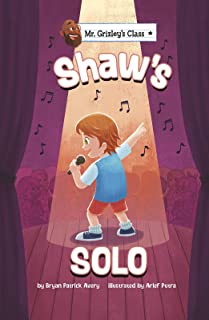 Shaws Solo
Shaws Solo
Bryan Patrick Avery
Shaw has an upcoming performance for the mayor and his whole school, but his stomach hurts so bad he isn't sure if he can perform his best. After talking with his teacher and his friends, he finds the best way to get ready for his special performance. The meditation bottle refocused Shaw enough that he is able to do his absolute best! Shaw's Solo is a great introduction to stage fright and having butterflies before a stage performance. This would be great for school aged children from 6-8 to discuss the nervousness before a performance and it also includes instructions for creating a meditation bottle which can be used with students as well. At the end of the story, there is a collection of discussion questions and writing prompts that can guide conversations as children learn to regulate their nervousness. (RULER)
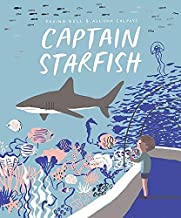 Captain Starfish
Captain Starfish
Davina Bell and Allison Colpoys
Captain Starfish is a story that follows Alfie as he struggles with his anxiety. When it comes time for the Underwater Dress-Up Parade at school, Alfie notices all the unpleasant feelings that come with being anxious and worried about an event. After a night of bad dreams, Alfie's mom takes him to the aquarium instead of the dress-up parade. At the aquarium, Alfie was able to realize that he was more like a clown fish than a starfish because he sometimes needed a moment to hide away and get ready to have new experiences. After a year, Alfie showed up to the parade as a brave clownfish, ready to shine at the parade. This story would be great to share with children ages 6-8 when they are getting ready to experience an event like a performance or parade. Lots of conversations can be started about how children feel when they are worried and anxious and can lead to great connections to animals and their feelings, just like Alfie did. Throughout the discussion, it would be prudent to discuss that even though Alfie decided to not participate at first, he took the time to regulate his emotions and later participated. (RUE)
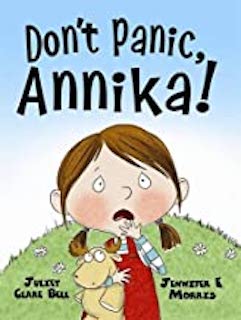 Don't Panic, Annika
Don't Panic, Annika
Juliet Clare Bell and Jennifer E. Morris
Don’t Panic Annika is a cute story addressing panicking when things go wrong. It repeats itself for reinforcement. When things go wrong and Annika panics and becomes unable to complete simple tasks. Her family coaches her through different strategies; deep breathing, counting to ten, and positive thinking. When Annika is accidentally locked inside her house with her family locked out, she gets to use those strategies alone to get the house keys. Finally, Annika talks everyone else through the calming strategies before handing the keys through the mailbox in the door. This book demonstrates how when we panic, we are helpless but when we pause to calm down we can fix our own problems. Perfect for counselors, teachers, and families. (RULR)
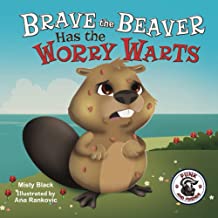 Brave the Beaver Has the Worry Warts
Brave the Beaver Has the Worry Warts
Misty Black and Ana Rankovic
Brave The Beaver is about a little beaver who recently moved to a new larger pond with his family. He is very anxious about attending a new school and worries about everything from lunch, to how he looks. His worries manifest as warts on his skin. To help calm himself down, he recites “ worries, worries, go away! I won’t listen if you stay. Breathe in courage. Breath out fear. Worries, you’re not welcome here. By the end of the story, he has encountered nearly all of the situations that he was worried about and learend that they weren't as scary as he had anticipated. He ends the story as a hero(he saved a classmate who fell in the water) and all of his worry warts disappeared. the illustrations are cute and colorful and would appeal to young readers. The discussion printed after the book is a useful tool for parents, teachers and students. It normalizes being anxious and provides some strategies on how to cope with those feelings. (RULER)
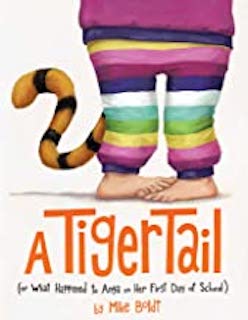 A Tiger Tale: (Or What Happened to Anya On Her First Day of School)
A Tiger Tale: (Or What Happened to Anya On Her First Day of School)
Mike Boldt
A Tiger Tail is about a young girl who wakes up with the tail of a tiger on the first day of school. She agonizes over how different she looks and worries that she will not fit in because of her newly grown tail. Throughout the story she tries to find ways to avoid going to school, only to be placated by her parents. I do not feel this book is ideal for SEL instruction as as the main character is not taught how to appropriately deal with and understand her emotions. At the end of the book, once she arrives at school she notices the different physical appearance in others and has a realization that differences are ok and her tail goes with her hair. While the illlustrations are cute and colorful, I feel that this book mainly teaches kids that differences are okay, not how to recognize and regulate emotions. (Does not reflect RULER)
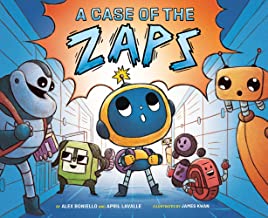 A Case Of the Zaps
A Case Of the Zaps
Alex Boniello, April Lavalle, and James Kwan
Pi, a robot, learns one day that his class is going on a field trip. He starts to consider all the “what ifs” that could happen on this trip and begins experiencing the “zaps.” Pi’s parental units see that he’s experiencing the zaps so they talk with him and take him to see Dr. Bleep Bloop who helps Pi learn that journaling, exercise, meditation, and spending quiet time outside can help Pi deal with his anxiety. They also talk about how it won’t go away but Pi has the tools to deal with it now. Pi goes on the field trip and has a great time. This fun, funny book is a good read-aloud and one-on-one read. (RLR)
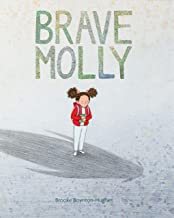 Brave Molly
Brave Molly
Brooke Boynton-Hughes
Brave Molly is a story with no words. The message is conveyed completely with illustrations. The pictures are simple, yet beautiful and very easy to understand and relatable. The anxiety that the main character is experiencing, social anxiety, is portrayed by monsters. The little girl wants to talk to a few kids her age sitting on a park bench, but she is too afraid to approach them. The monsters/feelings start popping up all around her. She tries to run away from her feelings, but the monsters follow her everywhere. Finally, the little girl screams at the monsters and all but one run away. She finds the courage to talk to the kids and ends up making a new friend. While this book doesn't explicitly mention social anxiety, I think this could be a nice book for teachers, parents and counselors to use to facilitate conversations on how to manage anxious feelings and to normalize social anxiety. (Does not reflect RULER)
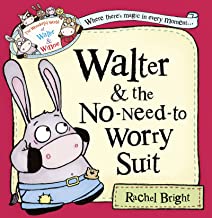 Walter & the No Need-to Worry Suit
Walter & the No Need-to Worry Suit
Rachel Bright
Walter and Winnie are the best of friends. Winnie meets every day with a smile and is ready for any challenge that comes her way. Walter on the other hand has his hands full with all of the worry he holds on to. As the duo prepares for the community fun day, Walter begins to worry about every event. Winnie thinks on what to do and decides to help her friend Walter out by building him a No Need to Worry Suit. When Walter wears this suit, he feels safe, however, it keeps him from enjoying all the fun events that are planned for the fun day. During the final event, Walter makes a choice that leads him to let go of his worry and embrace the new adventures around him without holding on to his worry! Walter & The No Need to Worry Suit is a charming tale of two best friends and their quest to help Walter overcome his worry. This book would be a great read aloud for young readers who are holding on to worry so tight they can’t enjoy the new experiences around them. The text allows for discussion on connecting personal experiences to Walter and Winnie. (LR)
 The Koala Who Could
The Koala Who Could
Rachel Bright and Jim Field
Koala loved his cozy tree home. While he clung to the branches of his tree, he knew he couldn't be swept up in the busy lives of his friends. He was great at being in his tree, he was king there, until one night he began to worry and his worst fear came true, his tree came down! After this life was very different. For so long Koala believed he was only good at being in his tree, but with the help of his friends, he quickly learned that he was capable of so much more in the world outside! The Koala That Could would be a great read aloud for younger to intermediate elementary students to lead discussions on branching out and trying new things. Koala is not overly anxious but is resistant to change. This would be a great discussion starter about having young readers understand that trying new things are healthy and enjoyable. (RR)
 The Lion Inside
The Lion Inside
Rachel Bright and Jim Field
The Lion Inside is about a mouse who wants to learn to roar so he can make friends. He decides to be brave and ask Lion to teach him to roar. When Mouse approached Lion, Lion “eeked” in fear. They became friends. This is a fun book for independent readers. The rhyme pattern builds fluency. There is not a strong emotional discussion but young readers can learn to take initiative to make change and be brave like Mouse. (RU)
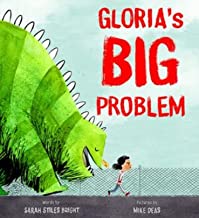 Gloria’s Big Problem
Gloria’s Big Problem
Sarah Stiles Bright and Mike Deas
Gloria loved to sing. She wanted to do more of it but like with most things she wanted to try, her Problem got in the way of letting her do it. Gloria’s Problem appears as a large, green monster wearing boxer shorts who talks to her about how she can’t do things, won’t leave her alone, and drowns out her voice when she sings. Gloria tells her family members about her Problem but they don’t take her seriously. When Gloria finds out there is going to be a play in town, she wants to audition but her Problem keeps whispering “what ifs” in her ear. Gloria gets so fed up that she shouts at her Problem to stop talking and with that, she tries out for the play and sings for the entire community. Gloria conquers her inner fears to do what she wants, which is a good message. A good read aloud for older elementary-aged children. (RLR)
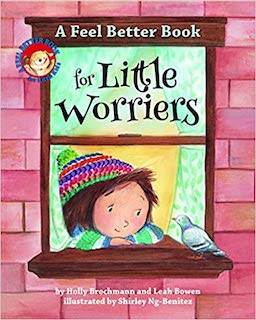 A Feel Better Book for Little Worriers
A Feel Better Book for Little Worriers
Holly Brochmann, Leah Bowen, and Shirley Ng-Benitez
How are you feeling today? Taking time to understand how you feel can help you keep balanced and ready for new adventures. In A Feel Better Book for Little Worriers, worry is explained in simple ways and provides a variety of helpful ways for children to identify how they are feeling and unique and helpful ways for them to bounce back and feel happy and bright. This book is a great tool for families to discuss how worry can help keep children safe, as well as how worry can be different for everyone. With easy to use methods, families can work together to discuss worries so children can learn to overcome worry. A discussion guide is provided for families to understand anxiety, recognizing and distinguishing worry, and tools for managing anxiety. (RULER)
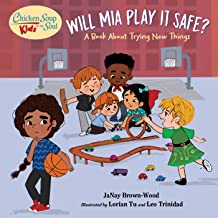 Will Mia Play It Safe: A Book About Trying New Things
Will Mia Play It Safe: A Book About Trying New Things
JaNay Brown-Wood, Lorian Tu, and Leo Trinidad
Mia and her four friends often play together but Mia is best at basketball. When one of her friends proposes that they draw, Mia is afraid she can’t draw very well and says she needs to practice basketball. When another wants to show the friends some card tricks, Mia begs off again, afraid she’ll do it wrong. When a new girl, Lily approaches the group to play, Mia recognizes her bravery in doing so. Soon, Mia invites Lily to play basketball with the friends and they teach Lily how to play. In turn, Lily teaches Mia how to build a ramp even though Mia thinks she won’t be able to do it. Mia discovers that she can try something new and she won’t necessarily be bad at it. The bright, fun illustrations support and enhance this story about getting out of one’s comfort zone. (RULR)
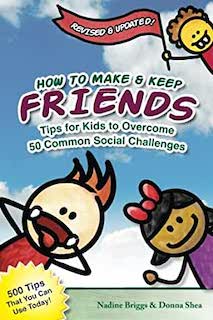 How To Make & Keep Friends
How To Make & Keep Friends
Nadine Briggs and Donna Shea
How To Make & Keep Friends is a nonfiction text that explores ways to help children understand and engage with different social situations. The goal is to provide support on navigating social nuances for caregivers and those working with children. There are no illustrations and much of the text is written for adults, however the information provided within the text can be used to support elementary children ages 5-8. This text would be best used in parts to help children who are struggling with social cues or making lasting relationships with their peers. (RULER)
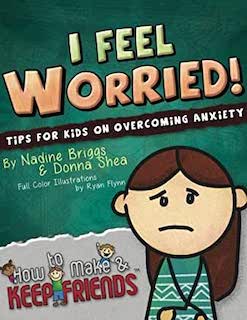 I Feel Worried! Tips For Kids On Overcoming Anxiety
I Feel Worried! Tips For Kids On Overcoming Anxiety
Nadine Briggs and Donna Shea
I Feel Worried! Tips For Kids On Overcoming Anxiety is an interactive workbook that introduces readers to stress, anxiety, worry, and fear. With the help of Worry Ninja and other characters, readers are able to work through a series of interactive prompts in the workbook to understand what anxiety is and what it looks like in their own lives. This interactive approach to understanding childhood anxiety also comes with a variety of techniques that can be used to help school aged children ages 6-8 process and understand ways they can personally work to regulate their own unique feelings of anxiety. This would be best when used one on one or if every child has their own copy of the workbook since it is meant to be personalized to each reader. (RULR)
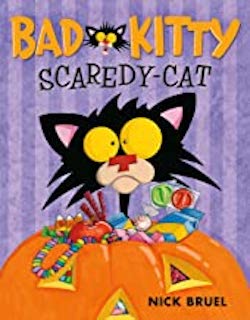 Bad Kitty: Scaredy-Cat
Bad Kitty: Scaredy-Cat
Nick Bruel
Bad Kitty is back in the new story, Bad Kitty: Scaredy Cat. Bad Kitty was just being his normal bad self until one night he was met with a host of different creatures that scared Kitty so bad, he didn’t know what to do. Poor Kitty was afraid he would be scared forever until he realized that all the things he was scared of were just delicious treats and trick-or-treaters ready for a night of candy. After realizing there was nothing to fear, Kitty went back to being his normal Bad Kitty self and ran off every monster and goblin that came his way. This story is an engaging story that introduces readers of all ages to rich vocabulary to describe how kitty is feeling. With the repetitive ABC pattern, this story is sure to engage young readers as they search to find the words that best describe how they are feeling. (RL)
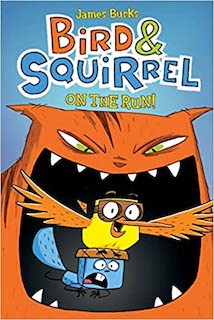 Bird and Squirrel On The Run
Bird and Squirrel On The Run
James Burks
Bird and Squirrel on the Run addresses worrying about the unknown and having a general optimistic outlook on life. This is a humorous graphic novel about two characters, Bird and Squirrel. Bird is carefree and optimistic while Squirrel expects the worst and worries about everything. Squirrel is over prepared and doesn’t enjoy life for fear something will go wrong. After Squirrel’s winter stores are destroyed, he agrees to go south with Bird for the winter. They embark on a journey full of hiccups. Throughout the journey Squirrel starts to learn he can't control or prepare for most things. He slowly starts to relax and enjoy himself, making the most of life. They continue to run into trouble but Squirrel’s new perspective frees him to enjoy life and take chances. The contrast in Bird's and Squirrel's reactions to the problems they face is obvious to the reader. The fun illustrations and over-dramatic tone brings humor to otherwise stressful situations. Perfect for independent readers or parent-child reading. (RU)
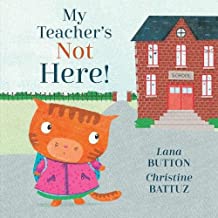 My Teacher’s Not Here
My Teacher’s Not Here
Lana Button and Christine Battuz
Kitty comes to school one day to find that her teacher, Miss Seabrooke, is absent. What has happened to her? What will happen to Kitty and the other students? The students’ substitute teacher shows them a note from Miss Seabrooke, explaining that she’s not feeling well and asks students to help each other and the substitute teacher. This makes Kitty feel better and she continues to do so throughout the day as she helps her fellow classmates. This is a sweet story but young readers will likely need the help of an adult to understand how helping others can decrease anxiety. (Regulating emotions)
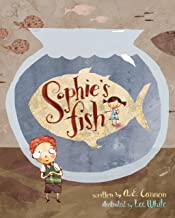 Sophie's Fish
Sophie's Fish
A.E. Cannon and Lee White
Sophie is going to her gram’s house for the weekend so she asks her friend, Jake, to take care of her fish called Yo-Yo while she’s out of town. Jake agrees without knowing what it takes to babysit a fish. While waiting for Sophie to bring Yo-Yo to his house, Jake thinks of all the things he doesn’t know: do fish take naps? Do they like to play games? What kind of bedtime stories do they like? He’s so worried that he won’t do a good job that he makes a plan to tell Sophie that he can’t take care of Yo-Yo after all. When Sophie arrives at his house, she explains that all Jake has to do is feed Yo-Yo twice a day. Jake automatically feels better. The fun twist at the end of this story makes it a great read-aloud. (RUL)
 Ping
Ping
Ani Castillo
Ping is an abstract story with a message about sending Pings out into the world and receiving Pongs back. You cannot control others’ Pongs. It deals more with connection with others than emotion. The characters are cute water colors. This book is best for counselors to use with children ages 6-8 who like to exclude themselves or struggle making connections with others. (RR)
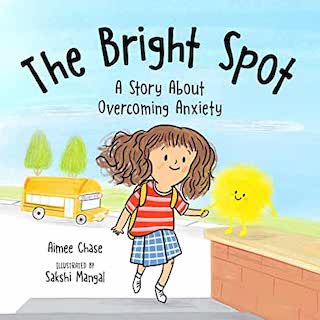 The Bright Spot: A Story About Overcoming Anxiety
The Bright Spot: A Story About Overcoming Anxiety
Aimee Chase and Sakshi Mangal
Lexi’s morning isn’t going well on her first day of school but soon a bright spot, literally a yellow dot, gives Lexi some confidence that the day won’t be so bad. Whether it’s the overwhelming nature of riding the school bus, a forgotten lunch, or Dad being late, the bright spot helps Lexi cope with her anxieties. She winds up understanding that quiet places, breathing, pets, stuffed animals, and envisioning favorite places can all help Lexi when she’s feeling overwhelmed. The rhyming narrative works well with the illustrations to show how the bright spot helps Lexi. This book would serve as a good introduction to coping strategies. (RULER)
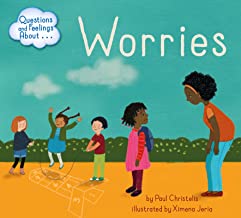 Questions and Feelings About Worries
Questions and Feelings About Worries
Paul Christelis and Ximena Jeria
This nonfiction picture book gives the reader an understanding of the nature of anxiety, including how we feel when we’re anxious, why we might be anxious, and how to cope with anxiety. Coping techniques include talking with people you trust, breathing, being outdoors, and writing about your worries. The cute illustrations enhance and support the narrative, which includes questions an adult may ask a child as they read the book together. The book concludes with notes for caregivers. (RULR)
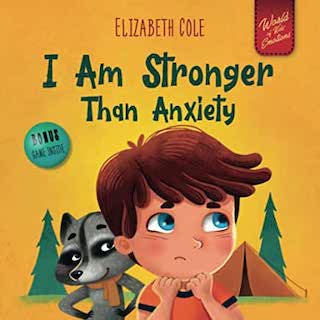 I Am Stronger Than Anxiety
I Am Stronger Than Anxiety
Elizabeth Cole
Nick and his dad are going camping for the weekend and Nick is excited until all of his “what if” questions start to overwhelm him. While his dad sets up their camping site, Nick visits a raccoon, a moose, and a bear who each have their own techniques for dealing with their anxiety and they share them with Nick. Nick returns to the campsite to tell his father about his day and about his anxieties, after which, Nick feels much better. The bright pictures support the rhyming narrative that may appeal to children in a one-on-one reading experience in which they can practice what they read. (RLER)
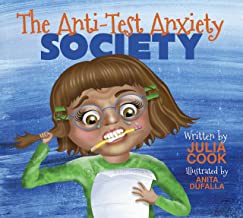 The Anti-Test Anxiety Society
The Anti-Test Anxiety Society
Julia Cooke and Anita DuFalla
The Anti-Test Anxiety Society is a book about testing strategies to handle test anxiety. There is little plot, a lot of acronyms, and a dynamic dozen test strategies to help ease students’ minds. This book is good for teachers and counselors to use with students who experience test anxiety. (RULR)
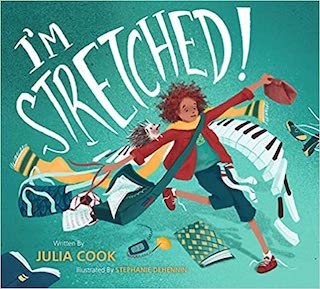 I'm Stretched
I'm Stretched
Julia Cook and Stephanie Dehennin
In this well-intentioned offering, the main character Henri experiences many negative emotions, including feeling overwhelmed, worried, afraid she doesn’t fit in, not good enough, and upset about family fighting. Henri explains that she feels like a rubber band, and her mom identifies the feeling as “stressed.” Henri’s mom tells her that stress can actually be helpful as it can help a person overcome challenges and grow. When stress gets overwhelming, she tells Henri that there are things that help, including mindful breathing and self-care, saying “no” to activities you don’t have time for, expressing your frustration to a trusted person, performing random acts of kindness, getting outside, exercising, and making an action plan to manage activities. Henri follows this advice for a week, and she is much more successful in managing her emotions. While there is plenty of worthwhile information here, from a narrative perspective there are too many problems, too many solutions, and too quick a resolution which, unfortunately, makes the experience of reading this title as overwhelming as Henri’s pre-intervention life. (Does not reflect RULER)
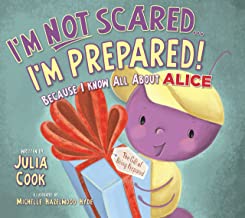 I'm Not Scared...I'm Prepared!
I'm Not Scared...I'm Prepared!
Julia Cook and Michelle Hazelwood Hyde
The teacher at Ant Hill School wants to give her students the gift of preparedness so she teaches them about how to react if a violent intruder enters their classroom. The author, who is a professional counselor, uses the “ALICE” approach to training students to illustrate how to respond appropriately. This would be a good book to use in schools where the "ALICE" method is taught because it educates and reinforces those lessons. (Does not reflect RULER)
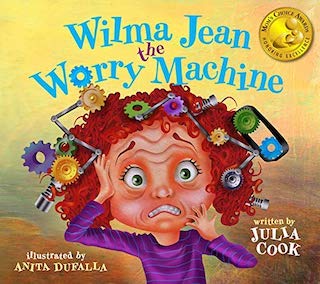 Wilma Jean, The Worry Machine
Wilma Jean, The Worry Machine
Julia Cook
This book offeres an age appropriate representation of childhood anxiety. The characterWilma Jean is worried about everyday stresses of school and being a kid. With the help of her teacher and mother, she is able to control her anxiety and manage her emotions with a worry hat and situational help from her teacher. There are useful coping strategies presented in the book and tips and tricks offered to parents and care givers after the story, and could be a nice tool to help parents with their own anxious children. I do feel this book oversimplifies how easy anxiety is to "fix," suggesting that Wilma Jean is broken. Additionally, the teacher is the main solution to Wilma Jean's worries and some of the causes of her anxiety aren't surrounding school. I think this is a good baseline book for dealing with anxiety, but shouldn't be the main resource for parents and caregivers. (RULR)
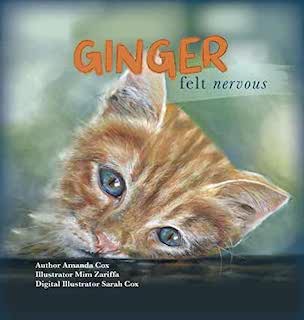 Ginger Felt Nervous
Ginger Felt Nervous
Amanda Cox, Mim Zariffa, and Sarah Cox
Ginger the cat has been made a group leader by her teacher. She and her classmates are assigned to create something they can share with the class. Ginger imagines all the things that could go wrong and becomes upset. The same thing happens when Ginger goes outside to join the soccer game. What if her friends get mad at her for missing a goal? Ginger goes to the library for some quiet time and then rejoins the class. She has a thought for their project and the group loves it. The story concludes with the class laughing at a joke made by someone else and Ginger being relieved that at least no one was laughing at her. Ginger is beautifully illustrated but the design of the drawn illustrations seem at odds with the design of the digital illustrations. Children may be attracted to a story about a cat, but it’s one that offers little in the way of coping with anxiety. (RUL)
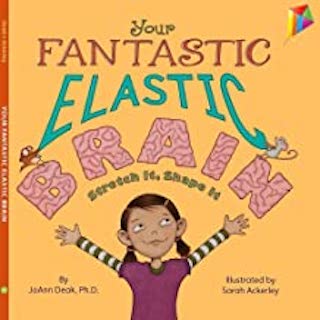 Your Fantastic Elastic Brain
Your Fantastic Elastic Brain
JoAnn Deak and Sarah Ackerley
Your Fantastic Elastic Brain is a picture book which demonstrates how the brain work, processes information etc. The illustrations are nicely done and this could be a good book for a science class to study. (Does not reflect RULER)
 Here and Now
Here and Now
Julia Denos and E. B. Goodale
Here and Now is a quaint book that introduces young readers to the power of meditation. A combination of illustrations and written text help young readers focus on things in the here and now to focus and be able to accomplish any task that they choose to take on. This book would be best used with preschool children, ages 3-5, to introduce meditation. This book would be a great way to teach young readers ideas and things they can focus on to guide their mediation practice. (RR)
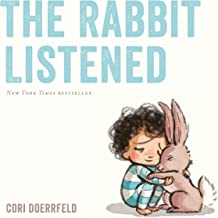 The Rabbit Listened
The Rabbit Listened
Cori Doerrfeld
In The Rabbit Listened, Taylor starts building the most amazing structure and was so excited to build something new and exciting, until something terrible happened to his structure. Taylor was extremely upset and he just didn't know how to get his feelings out. After a variety of animal helpers came by to give Taylor advice, nothing they suggested felt right until Rabbit came by to listen. Rabbit showed how Taylor could overcome his frustration and move on to building something even better. This story would be a great read aloud for young elementary students to discuss how different people handle frustrations. This read aloud could lead creating or displaying posters as a reminder on how to react when frustrated. (RUER)
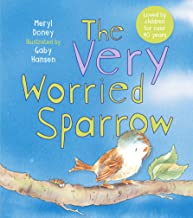 The Very Worried Sparrow
The Very Worried Sparrow
Meryl Doney and Gaby Hansen
There was a very worried little sparrow who worried about where he would get his food, how he would fly, and other bird concerns. One day, he met another sparrow who was shy and they decided to nest together. Sparrow was worried about the babies he would need to care for and then a dove came along and told him and the other sparrows about the Great Father who made the world and knew all the creatures in it. This made Sparrow very happy and seemingly no longer worried. The lovely illustrations help tell this story. (RL)
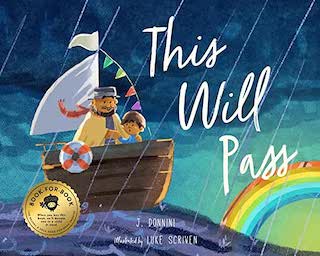 This Will Passl
This Will Passl
J. Donnini and Luke Scriven
Sea-adventurer Great Uncle Ollie visits Crue and tells him it’s time for them to take a trip to see more of the world. Crue is excited but has a lot of “what ifs” running through his imagination. Ollie and Crue have a great time but sometimes, there are storms, pirates, and sharks, all of which scare Crue. Ollie teaches Crue to take deep, slow breaths and to sing a song with the words, “be calm it will pass” as a mantra to help soothe Crue. Crue takes up this practice as the fun illustrations show the journey that Crue and Ollie take. This book is a great introduction to the use of breathing techniques and mantras to self-soothe. (RULR)
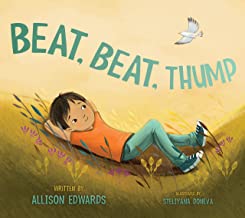 Beat, Beat, Thump
Beat, Beat, Thump
Allison Edwards and Steliyana Doneva
The protagonist of this story is a boy whose heart goes “beat, beat, thump” when he feels anxious. He describes how the sound moves from his chest to his head and makes it hard to hear anything else. But when the boy breathes in slowly through his nose, thinks of fun things, and people who love him, the beat, beat, thump fades. He also describes how his heart beats differently when he’s happy and having fun as well. This is a great introduction to understanding how it might feel to be anxious and what one can do to help center themselves. Bright, crisp illustrations help make this good for read-alouds as well as one-on-one reads. (RULR)
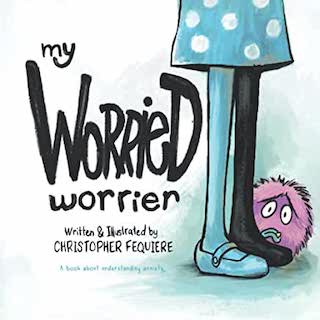 My Worried Worrier: A Book About Understanding Anxiety
My Worried Worrier: A Book About Understanding Anxiety
Christopher Fequiere
A girl is on her way to school one morning when her Worried Worrier stands in her way. Her Worrier multiplies as they all ask her “what if” questions about her day at school. Finally, she takes a deep breath and stops to think about her day so far and how everything actually went OK despite her Worriers’ concerns. The girl realizes that she can move past her worries and do all the things she wants to do. The use of color in these fun illustrations help relay context regarding how the girl feels throughout her day. The final scene depicts her confidently raising her hand in class while holding a small version of her worry, which suggests that a healthy balance of having her worry with her but overcoming its effects. Great for a read-aloud. (RLR)
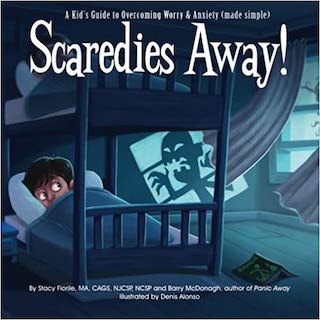 Scardies Away! A Kid's Guide to Overcoming Worry and Anxiety (Made Simple)
Scardies Away! A Kid's Guide to Overcoming Worry and Anxiety (Made Simple)
Stacy Fiorile and Barry McDonagh
A little boy named Jack is on a family vacation at the shore. He is afraid to surf the waves at the beach, scraed of the dark and refuses to ride a roller coaster at an amusement park. His cousin, Clay, seems fearless and serves as a mentor to him and teaches him that its okay to feel scared. He also teaches him about the 5 finger countdown (cognitive behavioral and acceptance/commitment strategy). This strategy helps Jack visuaize and let go of his fears and he is eventually brave enough to ride Big Red, the roller coaster he had avoided due to his anxiety. (RULER)
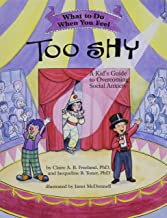 What to Do When You Feel Too Shy: A Kid’s Guide to Overcoming Social Anxiety
What to Do When You Feel Too Shy: A Kid’s Guide to Overcoming Social Anxiety
Claire A.B. Freeland, Jacqueline B. Toner and Janet McDonnell
What To Do When You Feel Too Shy is a workbook style text that focuses on giving readers precise vocabulary for dealing with and overcoming social anxiety. The authors took a unique approach and connected feeling anxious and worried to different parts of a circus. This take on feeling anxious was paired with workbook style reflection pages, as well as a chance for readers to write about how they currently feel and create a plan for overcoming the big emotions. This book would be best if used with children dealing with social anxiety challenges and could be used individually or in small groups as a tool to help build a toolbox of resources to help children regulate and manage their feelings. (RULR)
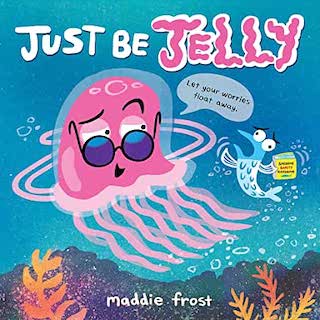 Just Be Jelly
Just Be Jelly
Maddie Frost
Sardine is focused on following the rules to keep him and his friends safe from predators. Sardine meets Jellyfish that gives him a helpful relaxation tool to get him refocused so he can find his group. When Sardine loses his handbook and goes on the search to find it, he uses Jellyfish's technique and realizes how much calmer he feels. When he finds his group, he changes up some of the rules from the book so they can all enjoy their time on the reef. Just Be Jelly is a great introduction for children ages 5-8 to calm down techniques. This story would be great when used as a read aloud to discuss how it is important to have rules to keep you safe, but focusing too closely on the rules can make them miss out on the things around them. This story would be great for children to start building their own Jellyfish dance to calm down. (RULR)
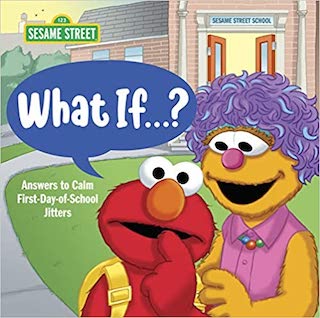 What If…: Answers to Calm First Day of School Jitters
What If…: Answers to Calm First Day of School Jitters
Sonali Fry and Joe Mathieu
Various Sesame Street characters are starting school tomorrow and their families are helping them prepare. Each character asks a “what if” question about a worry they have about going to school. The characters’ families help them understand what to expect, which makes the characters feel better. Everyone is seen having a great first day of school. The familiar cast of characters will help children understand that it’s normal to be anxious about starting school and that it’s important to talk to you family about your concerns. The author also offers several tips about how to help a child prepare for their first day of school. (RUL)
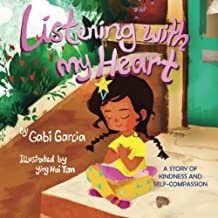 Listening With My Heart
Listening With My Heart
Gabi Garcia and Ying Hui Tan
Listening With My Heart is a diverse book about a girl, Esperanza, who is getting ready for a school play. She goes through her day and makes a new friend. During the play Esperanza falls on stage and that makes her forget her lines. After she is angry with herself and her new friends gives her a picture. This reminds Esperanza of ways she needs to be a friend to herself. The book includes helpful information about self-compassion at the front and the back. It is an entertaining story that exemplifies multiple ways to show self-compassion. Great for adults to read with children. (RULR)
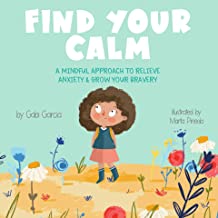 Find You Calm: A Mindful Approach to relieve Anxiety and Grow Your Bravery
Find You Calm: A Mindful Approach to relieve Anxiety and Grow Your Bravery
Gabi Garcia and Marta Pineda
This is a wonderful book for parents, teachers and students to help recognize and manage those anxious feelings that can take over your life. The main character in the story has anxiety that feels big and powerful, but through some grounding techniques (using your 5 senses, scanning the room for safety and focusing on the here and now) she is able to understand how her body reacts to anxiety and how to cope with those feelings. As her body calms down her bravery grows and she is able to overcome many of the tasks/activities causing her anxiety. I think this would an amazing addition to any family to help kids recoginze the healthy amount anxiety and how to manage overwhelming anxiety. I found it particulary helpful including the diagrams for the grounding strategies and think many would benefit from these calming activities when feeling overwhelmed. (RULER)
 The Energy Bus for Kids
The Energy Bus for Kids
Jon Gordon and Korey Scott
The Energy Bus tells the story of George who has been having a lot of negative feelings and events happen in his life. He gets on the Energy Bus and his driver, Joy, tells him the five rules of the energy bus. When George applies these rules he starts thinking positively and viewing things in a more optimistic way. This is realistic because the only change that happened was from George. Negative events still happened in his life but the way he thought about them changed. This story is great for teachers, counselors, families, and independent readers. (RUER)
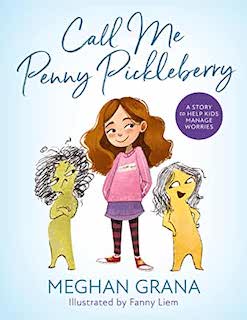 Call Me Penny Pickleberry: A Story To Help Kids Manage Worries
Call Me Penny Pickleberry: A Story To Help Kids Manage Worries
Meghan Grana and Fanny Liem
Penelope Pickleberry is a first grader with a lot of great stuff going on but she has a voice in her head called Nelly that tells her all the bad things that might happen. But Penelope also has a voice called Penny in her head, who tells her the truth and reminds Penelope of what she can do. Throughout the story Nelly and Penny vie to be the voice that steers Penelope through her day. Penny’s advice has to do with techniques to help Penelope cope with her anxiety, such as breathing exercises, mindfulness, and journaling. Penelope struggles between the two but she finally asks her friends to start calling her “Penny.” The great illustrations help convey how Nelly and Penny work on Penelope and will allow readers to understand what it’s like to have two voices influencing their anxiety. (RLR)
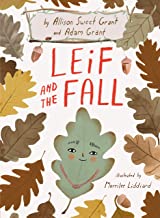 Leif and The Fall
Leif and The Fall
Allison Sweet Grant, Adam Grant, and Merrile Liddiard
Autumn is close at hand and Leif the leaf knows that all leaves fall in the fall. He’s scared about how it will feel when he falls so Leif’s friend Laurel helps him make a plan. They try creating several things to help Leif’s fall such as a parachute, a swing, and a net. None of these end up working so Leif throws them to the ground below. When the time comes for Leif to fall, he and Laurel both fall on the pile of discarded experiments and he feels fine. This is a nice story about trying to make a plan to combat anxiety and would make for a good read-aloud. (Regulating emotion)
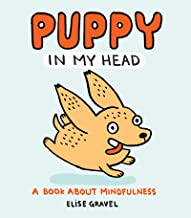 Puppy In My Head
Puppy In My Head
Elise Gravel
Puppy in my Head is a great comparison between the behavior of a real puppy and emotional events. Puppies get over-excited or send warnings about danger unnecessarily. In order to calm the puppy down, you attach him to a leash such as your breath. Breathing, talking about feelings, using up extra energy, cuddles, and attention can all help keep a puppy (and person) calm. While this metaphor may be tricky for younger readers, introducing the idea of ways to calm a puppy makes sense to families, counselors, and independent readers. (RUR)
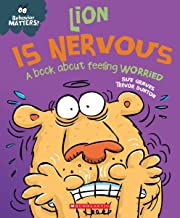 Lion Is Nervous: A Book About Feeling Worried
Lion Is Nervous: A Book About Feeling Worried
Sue Graves and Trevor Dunton
Lion is anxious about a lot of things but especially his class’ upcoming trip to Adventure Park. What if the bus breaks down along the way? What if he’s too big or too small for certain rides? Lion’s anxiety becomes so intense that his teacher talks with him and learns about his anxiety. She encourages Lion to talk about his anxiety with his friends, breathe, and think about all the good things that could happen during their trip. These make Lion feel better and he ends up having a great time at the park. This book, part of the “Behavior Matters” series, includes a guide for adults at the end to help them facilitate discussions with readers. Colorful illustrations help make this a great for a one-on-one reading experience. (RULER)
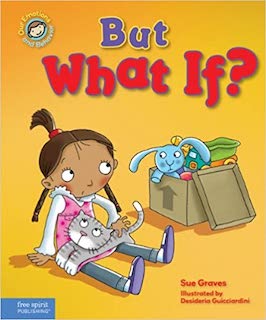 But What If?
But What If?
Sue Graves and Desideria Guicciardini
Daisy and her parents are moving to a new house and Daisy is going to be going to a new school. Although her parents are excited, Daisy has a lot of anxiety about the move. What if she doesn’t make new friends? What if her cat, Tigger, doesn’t like the new house and runs away? One night, when her grandfather comes over to babysit while Daisy’s parents are away, Daisy tells him about her worries. Grandpa explains that it’s not helpful to worry about things that might never happen, and even if a couple of Daisy’s worries do come to fruition, she’ll have people to help her work them out. She and Grandpa talk about the possibilities of the new move, like that Daisy may make a lot of new friends and that Tigger would never run away because he loves Daisy. The author provides a useful guide for adults to help children get the most from this reading experience. The colorful, fun illustrations help make this book recommended for read alouds and lower elementary-aged children. (RULER)
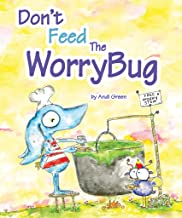 Don't Feed the Worry Bug
Don't Feed the Worry Bug
Andi Green
Don't Feed the Worry Bug is about monster named Wince who is battling a bug that feeds on worries. The more that Wince worries the larger and more annoying the worry bug becomes. Wince continues to worry about every little thing (laundry, baking, did he leave the light on, etc.) and the worry bug grows to an enormous size. Finally, Wince has had enough and with the help of some friends he is able to complete all of the tasks that were worrying him. By staying busy and completing tasks one by one the worry bug shrinks back to a managable size. Wince tells his worry bug, "I've got things to so--I must work, I must play! I'm not going to worry, so go on your way!" The illustrations in this book are both colorful and whimsical and may be appealing to some young readers. I feel like this book only scratches the surface on how to cope with anxiety. The message is, "don't feed the worry bug," which I don't feel is particularly helpful. The only real strategy given is to stay busy. Staying busy can be a useful tactic to temporarily relieve anxiety, but it is not sustainable in the long run. I would not recommend this as an aid for dealing with anxiety as there are many more books that give powerful coping strategies that are better for long term management of anxiety. (RR)
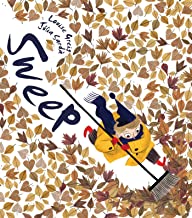 Sweep
Sweep
Louise Greig and Julia Sarda
Sweep is a tale of Ed and how he got swept up in his bad mood. When Ed is in a bad mood, it starts a whirlwind that takes over the entire town. Ed learns that his bad mood affects everyone else and realizes that he can stop his bad mood when he takes a pause and reflects on what he was actually upset over in the first place. This story would be great to use with school aged children, ages 6-8, to discuss general bad moods and how they impact others. This story also lends itself to starting conversations about how to manage bad moods and what unique things can be done to help get children back on track. (RER)
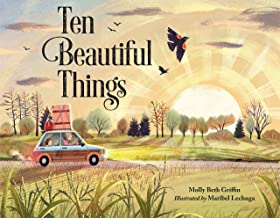 Ten Beautiful Things
Ten Beautiful Things
Molly Griffin and Maribel Lechuga
Ten Beautiful Things takes a trip with Lily as she moves across Iowa to move in with her Gram. Lily is sad and has lots of feelings about this new move, but Gram is there to help her by giving her a challenge of finding ten beautiful things as they journey across Iowa. As Lily and Gram picked out ten beautiful things, the worry and unease she felt about moving melted away. This story would be great to read with school aged children from 6-8 years old that may be experiencing an unexpected move or to use to show children how to redirect their negative thoughts into more positive thoughts. (RUR)
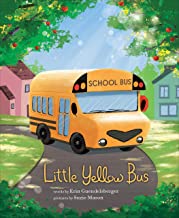 Little Yellow Bus
Little Yellow Bus
Erin Guendelsberger and Suzie Mason
Little Yellow Bus wakes up on the first day of driving children to school feeling nervous. He wants to feel excited but he’s scared about all the things that might happen on his bus route. Yellow talks through his worries with his parents and they encourage him to try, taking the day stop-by-stop. Yellow does this and finds that he’s having fun on his first day. The story’s unique approach of situating a bus as an individual with anxiety works very well. (RULER)
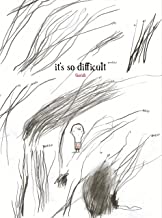 It’s So Difficult
It’s So Difficult
Raul Nieto Guridi
This story follows a boy who experiences extreme social anxiety. As the book’s title suggests, moving through the world is very difficult for the boy. Through the book’s illustrations, the reader understands that the boy finds the world to be messy and chaotic. He copes with his anxiety by counting and focusing on shapes. The story ends with the boy trying to interact but feeling the weight of how difficult it is. This is a unique, sophisticated book that artfully communicates how difficult it is to feel social anxiety. (RR)
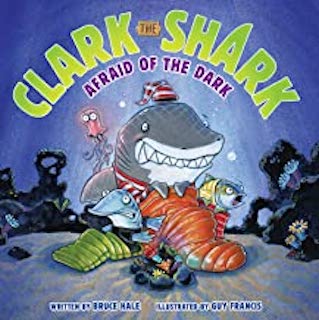 Clark The Shark: Afraid Of The Dark
Clark The Shark: Afraid Of The Dark
Bruce Hale and Guy Francis
Clark the Shark: Afraid of the Dark follows Clark as he gets all ready for his first big sleepover outside with his friends. The only problem is that it is dark outside and his trusty fishy night light that glows throughout the night will be inside. To get ready, Clark makes up a short rhyme to help him when he starts to feel afraid. Everyone is having fun until it is time to go to sleep...outside. Clark thought he was the only one afraid of the dark, but it turns out all of his friends were a little afraid of the dark and needed Clark's rhyme. This story will be a great story to share with young readers who are afraid of the dark or are a little nervous about going to their first sleepover. Clark models some great strategies for handling his fear and can be used to help readers build their own techniques. (RUER)
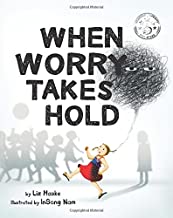 When Worry Takes Hold
When Worry Takes Hold
Liz Haske and InSong Nam
When Worry Takes Hold is about a girl, Maya, who worries a lot. It kept her from feeling happy and doing fun activities. Then Maya learned if she took calming breaths, she could summon courage. She began to participate and live a happier life, leaving worry to only come around to keep her safe. The illustrations are dark. This story is a good depiction of how worry can take over. Giving the option of calming breaths and courage allows young readers to move past their concerns. Good for families and counselors of children ages 4-7. (RULR)
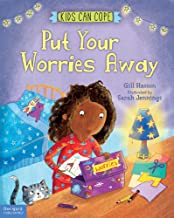 Put Your Worries Away
Put Your Worries Away
Gill Hasson and Sarah Jennings
Part of the “Kids Can Cope” series, this brightly illustrated book takes the reader step-by-step through learning about worry and anxiety and how to cope with it. Children will very likely identify with the textual and pictorial descriptions of anxiety. The book concludes with activities for kids and notes for teachers, parents, and other adults. This is a wonderfully informative and accessible book for older elementary-aged children. (RULER)
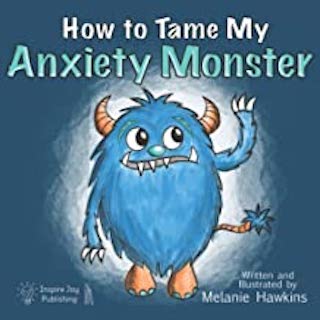 How to Tame My Anxiety Monster
How to Tame My Anxiety Monster
Melanie Hawkins
How to Tame My Anxiety Monster teaches both caregivers and children how to recognize the signs of anxiety. The different types (healthy and unhealthy stress) is presented in a well-delivered way that younger children can easily understand. Through colorful illustrations, the reader also learns several mindfulness exercises to help calm their big feelings. One aspect about this book that makes it a particularly good tool are the tips and tricks presented at the end of the story. I believe this is a valuable resource and could be a great way to talk children about unmanageable feelings of worry and anxiety. (RULER)
 Worry Glasses: Overcoming Anxiety
Worry Glasses: Overcoming Anxiety
Donalisa Helsley and Kalpart
The Worry Glasses was written by a children’s therapist and features a child, MJ, who has anxiety. The book goes through a first visit to a therapist and strategies to calm anxiety. This book is appropriate for families and counselors who want to show children what it can be like to work with a therapist for the first time. (RULER)
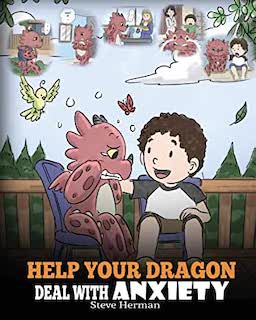 Help Your Dragon Deal With Anxiety
Help Your Dragon Deal With Anxiety
Steve Herman
Drew's Dragon, Diggory Doo, used to always be worried. Diggory Doo would worry about everything he experienced until Drew helped him understand that his worry was eating up all of his time and causing him to not be the very best dragon he could be. With Drew's help, Diggory Doo learned some amazing calming and refocusing strategies to help him remain calm and change his mindset to overcome his anxiety. Help Your Dragon Deal With Anxiety is a great tool to use with children struggling with generalized anxiety. The text discusses common areas of worry and anxiety for school aged children, ages 5-8, such as getting shots, playing in team sports, and giving oral presentations in front of peers. This would be a great conversation starter to use when having children verbalize their worries and to begin building a toolbox and creating an open mindset to handle the anxiety. (RULER)
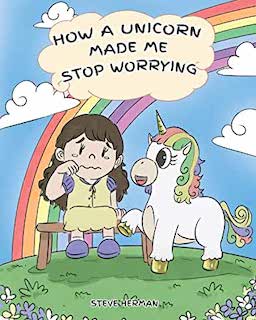 How a Unicorn Made Me Stop Worrying
How a Unicorn Made Me Stop Worrying
Steve Herman
Allie has a friend in the unicorn named Dazzle Delight, who Allie calls Dazzle D. Dazzle D makes Allie feel great, even when Allie is sad and anxious. Allie has a lot of “what if” questions, such as, what if my best friend has a new best friend? What if no one wants to play with me at the party? Allie expresses these concerns to Dazzle D. who in turn teaches Allie not to focus on what could go wrong - only what could go right. Bright illustrations will interest unicorn-loving readers with this rhyming narrative. (L)
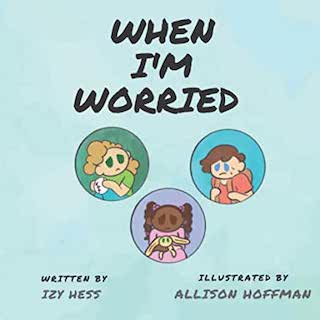 When I’m Worried
When I’m Worried
Izy Hess and Allison Hoffman
Written by the author as part of a Girl Scout project, this book features the stories of three characters, each of whom is experiencing anxiety and each of whom reaches out to their parent(s) for guidance. The parents each give different approaches to coping with anxiety, all of which help their child through their particular situation. This may be a good tool to use with children when introducing different approaches to coping with anxiety. (RULR)
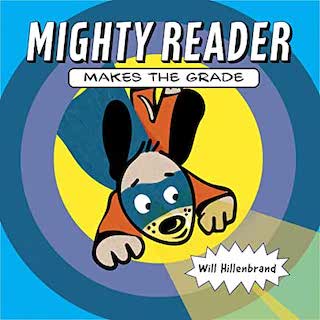 Mighty Reader Makes the Grade
Mighty Reader Makes the Grade
Will Hillenbrand
Lola is asleep when she suddenly wakes up in a nightmare that she’s missing her state examination and that there’s academically-themed monsters chasing her, trying to make her flunk. She is rescued by Mighty Reader, a superhero, who encourages Lola to use Partner Power to read to the monsters to defeat them. Mighty Reader and Lola escape only for Lola to wake up the next morning, ready for her exam. Her teacher invites students to Choice Time Calming Centers before the test, where they can pet a plush animal, do yoga, play with building blocks, or read. Lola chooses to read but falls asleep doing so, and wakes up to the same monsters as before. Mighty Reader invites her to read with him, see saw style, and they seem to get rid of the monsters. This results in a new test preparation approach of practicing reading with buddies. Part of the “Mighty Reader” series, this book’s aim is clearly focused on reading skills. As such, it does not offer much by way of practical skills to help students reduce anxiety. (UR)
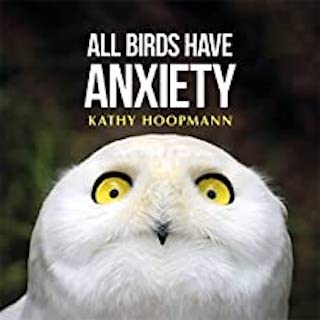 All Birds Have Anxiety
All Birds Have Anxiety
Kathy Hoopmann
All Birds Have Anxiety gives readers an in depth explanation of what anxiety is and how it impacts ones' mind and body. Using real life images of birds, readers are given detailed information about what anxiety may look like, what it may feel like, and how to work to overcome the anxiety. The images are, at some times, comical and allows readers to begin connecting to the feelings and information being shared. This book would be best used with school aged students and could be used in portions or as an entire piece of literature. I absolutely loved this text and found it beneficial to me, even as an adult. (RLR)
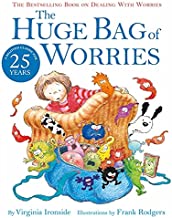 The Huge Bag of Worries
The Huge Bag of Worries
Virginia Ironside
The Huge Bag of Worries is about Jenny who has a lot of worries. She carries them around in a big bag that weighs her down and keeps her feeling bad. Jenny doesn’t want to bother anyone with her bag of worries until one day she can’t take it and sits to cry. Her neighbor notices the crying and the huge bag of worries. Jenny’s neighbor advises Jenny to show her the worries one by one to make them go away. They go through the bag and the worries start to go away. This story is a good demonstration of how sharing worries with others can make you feel lighter. Good for families and counselors of children ages 4-7. (RUR)
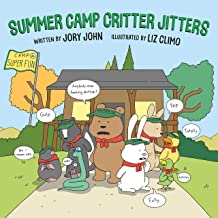 Summer Camp Critter Jitters
Summer Camp Critter Jitters
Jory John and Liz Climo
A group of critters are making their way to an outdoor summer camp for the first time and they each have worries about what they might experience. What if they have to catch their own food? What if their sleeping bags don’t work? What if they don’t make any friends? When they all get to camp, they work together to help out another critter and learn that things are so scary after all. The message here seems to be to try doing things you're scared of doing and they might not become so scary. Adorable cartoon-like illustrations help make this a great read-aloud for younger elementary-aged children. (RULR)
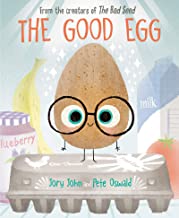 The Good Egg
The Good Egg
Jory John and Pete Oswald
Good Egg was…well…a good egg! He worked hard to help others and do the right thing. His roommates were not such good eggs and it really made Good Egg anxious and stressed. Until one day, that stress made Good Egg crack. After a trip to the doctor and some time alone, Good Egg was able to return to his friends and learn to not worry so much. The Good Egg is a great read aloud to introduce students to how worrying about others and their actions can stress someone out. The calming strategies that the Good Egg shares are good to practice and utilize for both young and old. This story is a part of a series that offers great communication starters for how young readers can grow and become better versions of themselves. (RUER)
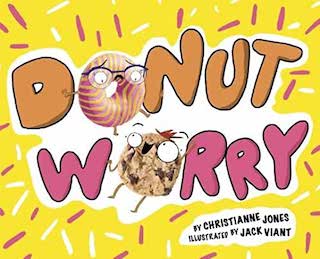 Donut Worry
Donut Worry
Christianne Jones and Jack Viant
Donut is feeling very anxious about going back to school. Her family and friends tell her to stop worrying but that doesn't help. Then she meets Cookie who has felt the same way that Donut feels now. Cookie tells her about developing a mantra, doing breathing and physical exercises, and journaling. Donut practices these at home and by the time school starts, she’s ready to face her anxiety. The fun donut and cookie characters help enhance and support this story about learning how to deal with your anxiety. Recommended for one-to-one reading. (RULER)
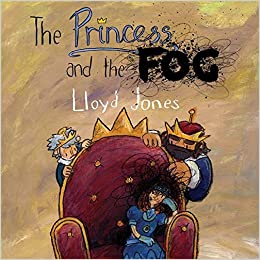 The Princess and The Fog: A Story for Children with Depression
The Princess and The Fog: A Story for Children with Depression
Lloyd Jones
Once, there lived a Princess, who loved life and was loved by all. One day, she started to notice a fog building around her head. The fog grew steadily until the Princess didn’t feel like doing any of the things she loved, couldn’t concentrate on anything, and felt slow, sad, alone and tired. Her parents tried to cheer her up but that didn’t help. A friend finally asked the Princess if she wanted to talk, which helped. The Princess talked a lot more to a Wise Woman, began to take a potion prescribed by the castle Druid, and explored the outdoors with the Adventurers. Slowly, the fog went away and everything returned to normal, except sometimes, the fog would return, but the Princess now knew what she could do to feel better. Through metaphor and wonderfully supportive illustrations, the author presents a very good introduction to depression and how those who experience depression can help regulate it. (RULR)
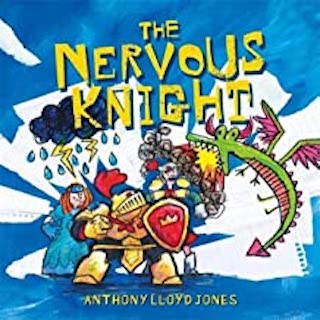 The Nervous Knight : A Story About Overcoming Worries and Anxiety
The Nervous Knight : A Story About Overcoming Worries and Anxiety
Lloyd Jones and Ian McDonald
The Nervous Knight is a story about overcoming anxiety and worry. The main character, the knight suffers from general anxiety and frets about many things. Rather than participating in training school they watch everyone else, never feeling like they belong. They also avoid social situations, fearing something bad may happen. This anxiety makes it hard to breathe, freeze up, shake, cry and get a stomach ache. Their classmate helps the kight see that everyone gets scared now and then and often times, the imagined outcome is worse than what actually happens. This book is a really great starting point for parents and teachers, it is written with children in mind, and is very easy to understand and relate to. The illustrations are colorful and simple and add a lot of charcter to the knight. This book could be a wonderful tool to use during Circle exercises or during any SEL activity. (RULER)
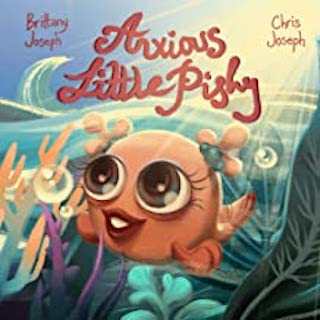 Anxious Little Pishy
Anxious Little Pishy
Brittany Joseph and Christopher Joseph
Little Pishy is loved by those around her. She makes them laugh and smile every time she is around. Little did they know that Little Pishy had a secret…she got nervous sometimes. Eventually the little butterflies started to make Little Pishy feel anxious and she started to not be her fun-loving self. When her teacher notices that Little Pishy seems off, he encourages her to talk to her family. When Little Pishy shares her feelings, Mama Pish knows exactly how Little Pishy feels and they come up with ways to overcome the anxiety that Little Pishy is feeling. After some practice and help from her family and friends, Little Pishy is back to herself and ready to try new things. Anxious Little Pishy is a great way to explain to 5-8 year olds how anxiety can look and feel and that it is okay to be a little anxious sometimes, but with help from family and a little practice, readers can banish the anxious thoughts and get back to making others smile and having fun.
(RER)
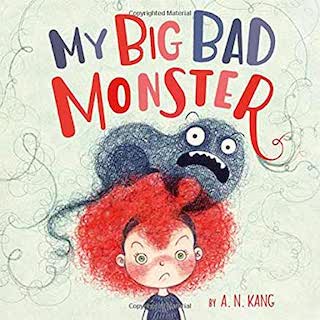 My Big Bad Monster
My Big Bad Monster
A.N. Kang
My Big Bad Monster follows a young girl who has a little monster that just won't leave. This little monster makes fun of her and the little girl starts to act just like the little monster that is growing bigger every day. One day the young girl decides to get rid of her big bad monster by discovering a new hobby that makes her feel good about herself and her friends. This book would be a great encouraging read for young elementary children, ages 5-8, that are struggling with self-doubt and feeling anxious. This is a great book to start discussions on unique hobbies that can be explored to combat self-doubt. (RUER)
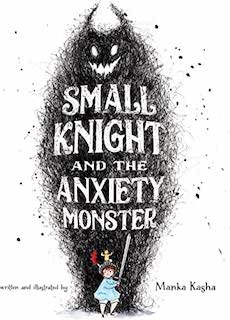 Small Knight and the Anxiety Monster
Small Knight and the Anxiety Monster
Manka Kasha
The monster in the book is called "the anxiety monster," but I don't think that accurately describes the feeling/emotion the main character is actually feeling. The Small Knight and the Anxiety Monster is about a little girl who feels pressure from her parents to become a perfect princess and anxiety Monster shows up (portrayed by a squiggly purple monster. No one else can see this monster so the small knight must save herself and goes on a quest to discover what the monster actually is. After asking several creatures on her quest what the monster is and how to defeat it, she finally learns that she has to look inside herself and confront the monster, which is really her fear of letting her parents down. I think this is more of a feeling of fear rather than anxiety, but it did reflect some of the components of RULER. I don't know if this would be my first choice for teaching about managing emotions, but it is a cute book, nonetheless. (Does not reflect RULER)
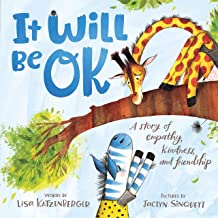 It Will Be OK
It Will Be OK
Lisa Katzenberger and Jaclyn Sinquette
It Will Be Okay is a sweet story about two friends, Giraffe and Zebra, who usually visit at the watering hole. Giraffe can’t go to the watering hole because he is worried he might see a spider. Zebra reminds Giraffe he is bigger, stronger, and faster than Spider. Giraffe is still too scared. Zebra shows empathy by waiting until Giraffe is ready. With his friend Giraffe feels brave. This story demonstrates to young readers it is normal to worry, even over silly things, and how to be a good friend to someone who is worrying. There are notes in the back for adults who want to help young children understand feeling anxious and having empathy. (RULER)
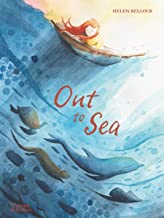 Out to Sea
Out to Sea
Helen Kellock
Lara missed her Nana. As Lara kept focusing on how much she missed making memories with her Nana, she felt herself settle into a deep sadness, so deep she was on the bottom of the ocean. As she sat, feeling so low, she found a glowing pearl that helped her see she was not alone and helped her remember all of the things that made her glow and feel warm on the inside. Out to Sea would be a great read aloud for older readers, ages 6-8, to help them realize that even in their sadness and worry, they can focus on all the things that make them help and hold on to those for times when they feel sad. This story would be best when explained with young readers since it has a lot of symbolism. (RUR)
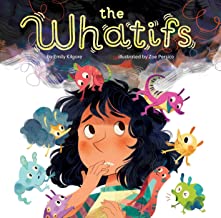 The Whatifs
The Whatifs
Emily Kilgore and Zoe Persico
Cora is a nervous girl. As she encounters more worries and holds on to them, more "Whatifs" start to cling to her. The "Whatifs" make it difficult for her to enjoy the things around her and makes it tricky to perform her best at her piano recital. When her friend Stella shows her that "Whatifs" don't have to weight her down, Cora begins to see how her "Whatifs" can help her instead of bringing her down! The Whatifs is an engaging story that follows young Cora as she battles with her "Whatifs" This story gives a visual image for how worry can weigh people down. This story would be great for younger elementary students before a performance or if the worries of a new year start to overwhelm young readers. (RUER)
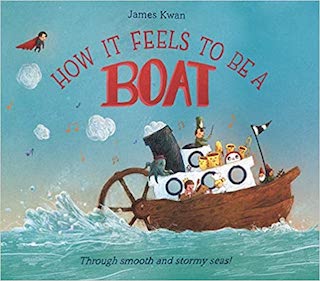 How It Feels to Be a Boat
How It Feels to Be a Boat
James Kwan
Resiliency is the theme in this beautifully illustrated story that situates the reader as a boat. In this metaphor, the reader is asked to imagine their body as various working parts of a boat, including the passengers that live in the many rooms of their stomach. Usually, those passengers get along but when they fight, they can cause the boat to crash and the heart of the boat to hurt. When this happens, the passengers rebuilt the boat around the healing heart and the boat continues to chug along. Adults may want to consider reading this book with children, allowing time during the reading to imagine what it would feel like, for example, to have people fighting in their bellies. (RU)
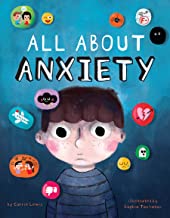 All About Anxiety
All About Anxiety
Carrie Lewis and Sophia Touliatou
All About Anxiety takes a unique approach to helping explain anxiety and other overwhelming emotions to young readers. This nonfiction text helps teach young readers to learn more precise emotional vocabulary, as well as varied strategies for regulating each emotion. This text also gives a great illustration of being a zookeeper and connects to managing anxiety and other big emotions. This text would be a great resource to use with older students who need additional support learning how to manage and regulate their emotions. There are also great strategies that would be beneficial for children and adults alike. (RULER)
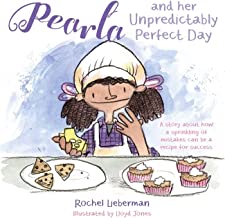 Perla and Her Unpredictably Perfect Day
Perla and Her Unpredictably Perfect Day
Rochel Lieberman and Lloyd Jones
Perla and Her Unpredictably Perfect Day is about a little girl who helps at her father's bakery every Sunday. She usually bakes perfect cupcakes and cookies, but on this particular Sunday, she forgot the baking powder in her batter and both her cookies and cupcakes are "ruined." Perla initially is very worried that she made a mistake but repeats, "I am a person and people are not perfect. I did my best." Luckily Perla comes up with a plan and sales her imperfect baked goods to some customers who appreciate the unique goodies. Throughout the story Perla learns that everyone makes mistakes and that nobody is perfect. She repeats that mantra, "I did my best and feel thankful for the rest" I do not necessarily feel that this book should be classified as a book dealing with anxiety, but rather, perfectionism. The afterward for the book discusses making mistakes and helping children with anxiety, ASD, ADHD deal with disappointment and small unexpected changes (which can trigger anxiety). I do think this book is a valuable tool for teachers and parents, especially for those who children are perfectionists and are anxious about making mistakes. (RLR)
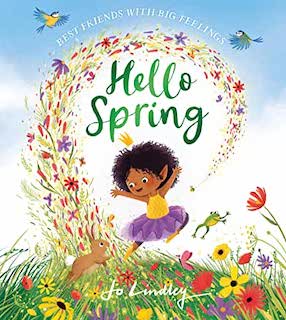 Hello Spring
Hello Spring
Jo Lindley
Spring, Winter, Fall, and Summer take turns wearing the weather crown and leading games, but today is Spring’s day to be crowned. She knows it’s going to be the best spring ever but when she calls on the flowers to bloom, the birds to fly, and the butterflies to emerge from their cocoons, no one is ready. Spring becomes upset but her friends try to help her feel more like spring when a thunderstorm comes and rains out their efforts. Spring suddenly realizes that no season needs to be perfect, as long as it’s fun, so she employs a breathing technique and envisions images of spring and then suddenly, spring has sprung and Spring finds that nothing matters more than friends. This is a gorgeously-illustrated book, of which contains visuals that many children will like to pore-over. The story is cute but will require adults to help children interpret the way in which Spring deals with her anxiety. (RULR)
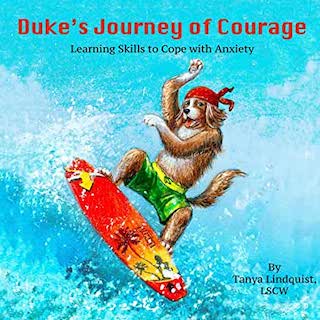 Duke's Journey of Courage
Duke's Journey of Courage
Tanya Lindquist
Duke's Journey of Courage is a heartwarming story that follows Duke as he tries to combat his fear, worry, and anxiousness about competing in a surf competition. With the help of Sir Barks-A-Lot, Duke is taken on a magic dog bed ride to learn new calming techniques that he can use when he is feeling anxious. On his way to the surf competition, Duke begins using some of the techniques and ends up doing well in the competition. This story would be best used with older students, ages 7-8, due to the length and detailed conversations held within the story. This book comes with a helpful guide to help talk with children about their worries, fear, and anxieties. With a detailed preface and interactive questioning at the end, this story would be great to use with students before they have some sort of performance, they may be nervous about or even just times when they are feeling anxious or worried. (RULER)
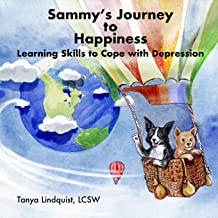 Sammy's Journey to Happiness: Learning Skills to Cope with Depression
Sammy's Journey to Happiness: Learning Skills to Cope with Depression
Tanya Lindquist
Sammy’s Journey to Happiness is a clinical book that uses a lot of words to explain depression. The font and illustrations are cold. The plot is similar to Christmas Carol and a fairy dogfather takes Sam to various situations. Many references, such as Wimbledon and Greyhound Area, will have to be explained to young readers. This story will be good for patients of the author ages 6-8. (RULER)
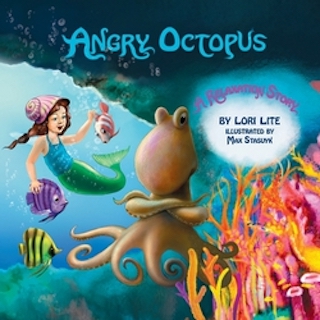 Angry Octopus: A Relaxation Story
Angry Octopus: A Relaxation Story
Lori Lite
Octopus loves having his breakfast in his special garden, until one day he wakes to find that a group of traveling lobsters ruined his seashell garden. Octopus was upset and the more he looked at the mess, the madder he got. He could feel his body getting tighter and tighter. He thought he might just explode…and he did! A black ink cloud circled Octopus as he creamed. When the sea child swam over, Octopus was not sure if she could help, until she taught him how to release all of the bad feelings he was experiencing. The more deep breaths Octopus took, the better he felt until he realized he could solve the problem he was facing. In Angry Octopus, readers see how Octopus shows his frustrations, but also how he gets help from a friend to calm down enough to overcome and solve his problem. This story teaches young readers that they can become the boss of their feelings when they take the time to take some deep breaths and focus on relaxing. (RULER)
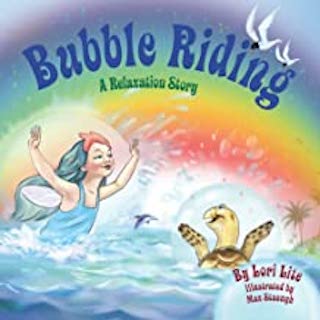 Bubble Riding: A Relaxation Story
Bubble Riding: A Relaxation Story
Lori Lite
Bubble Riding: A Relaxation Story is an introduction to one type of meditation. The “sea child,” a mermaid, was tense after a day of activity and played her favorite game “bubble riding.” Bubble riding is a forced way for the reader to experience a color-imagery relaxation. The text is unnecessarily wordy. Repetition is overused. Each color has a purpose to bring the sea child and the sea turtle to a relaxed state. The story ends abruptly after the sea child and the sea turtle get to the surface of the ocean having “experienced the wonder of colors.” The author is clearly familiar in leading adults through relaxation. This book is ideal in a kids yoga class. (RUR)
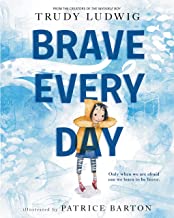 Brave Every Day
Brave Every Day
Tracy Ludwig and Patrice Barton
Camila worries a lot. She worries “what if,” “I can’t,” and I’m scared.” One day, Camila’s teacher announces that the class will be visiting the aquarium on a field trip and Camila worries about all the things that could possibly go wrong. On the big day, Camila tries to hide at the aquarium but bumps into her classmate, Kai, who is also hiding. He, too, is scared so he and Camila make a plan to try to visit the animals in the aquarium together. Their trying results in the two of them having a great time and Camila discovers that if she tries when she’s scared, she might overcome her fears. The wonderful illustrations help tell this story, which would be a good read-aloud and the “Questions for discussion” at the end of the book make it a great one-on-one read as well. (RULER)
 The Invisible Boy
The Invisible Boy
Trudy Ludwig and Patrice Barton
Brian is a seemingly invisible boy and no one notices him or thinks to include him in groups, sports teams and birthday parties until Justin, a new boy, joins the class. Brian was the first student to welcome Justin, and puts a note in his backpack praising his delicious looking lunch (Korean Bulgogi) and they soon team up on a classroom project. Once Brian is included in the group, he starts to gain color, like the rest of the characters, and up until that point he was represented only in black and white. Once his classmates see his value he is fully in color and accepted by his peers. While this is a great book and a heartwarming tale, I do not feel it meets the RULER qualities for this book. I do, however, recommend this book for every classroom. (Does not reflect RULER)
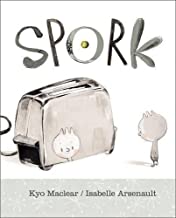 Spork
Spork
Kyo Maclear and Isabelle Arsenault
Spork is lonely because he doesn't look like anyone else in the cutlery drawer. He’s not a spoon or a fork, but both. He tries to fit in with the hope of being picked to use at a meal but it doesn’t work. Then one day, a messy baby joins meal times and Spork finds his time to shine. Very funny and cute illustrations help make this a very entertaining story although there is no real discussion of Spork accepting who he is or dealing with his anxiety. (UL)
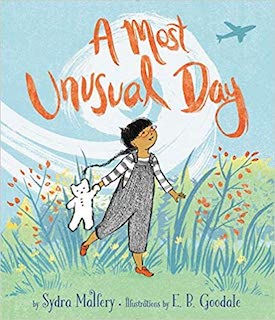 A Most Unusual Day
A Most Unusual Day
Sydra Mallery and E.B. Goodale
Today was going to be a BIG day for Caroline. She could feel it! A Most Unusual Day follows Caroline as she waits patiently for the end of the day. Although she feels out of sorts, Caroline keeps working through the day and has her friends to help her stay focused so she can be ready to welcome the new baby coming home that afternoon. When she finds herself trying to help and making a bigger mess, Caroline’s friends and teacher encourage her to keep going and to get ready for the end of the day. As Caroline meets the new baby, she realizes it may be a most unusual day, but it is also an incredible day. This would be perfect for helping new siblings adjust to inviting a new baby into the family. They feel unusual as the day gets closer and Caroline and her friends are models to help children adjust to the new changes. Perfect for 5-8 year olds as they understand the changes they may feel as they are introduced to new family dynamics. (RUE)
 School In the Time of Coronavirus
School In the Time of Coronavirus
Emily Mazzulla, Ph.D. and Antonija Marinic
Maria is getting ready to go back to school tomorrow after having had remote school because of the coronavirus. She is anxious and unsure about all of the changes at school, such as wearing masks and having desks positioned six feet apart. Maria shares her concerns with her mother who encourages Maria to take one day at a time. Her mother also encourages Maria to keep talking to her about Maria’s concerns and that they can make a plan if Maria still feels anxious. Maria’s mother also encourages her to talk to her teacher if she feels bad at school. The author concludes the book with tips for adults to help their children develop resilience. (RULER)
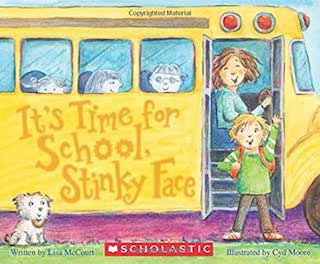 It's Time For School, Stinky Face
It's Time For School, Stinky Face
Lisa McCourt and Cyd Moore
Stinky Face and his mom were talking about Stinky Face's worry about all the what-ifs that he can think of about going to school. Mom explained everything to Stinky Face in a fun way to help him not be so worried about going to school. It's Time for School, Stinky Face is a comical look at how a parent helped her young son overcome his worry about getting to school. This approach helped her son, Stinky Face, not feel so worried about the trek. This story would be best used with school aged children, ages 5-8, and would be a great read aloud for readers to brain storm and imagine fun ways to overcome their own individual worries. (RU)
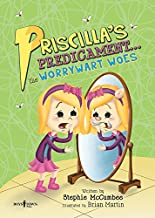 Priscilla's Predicament: The Worrywart Woes
Priscilla's Predicament: The Worrywart Woes
Stephie McCumbee Brian Martin
Priscilla's Predicament is about a little girl named, Priscilla who worries so much that she begins to sprout tusks, ears, a snout and hair everywhere. She eventually turns into a worry warthog. The school nurse writes Priscilla a prescription that she says will cure her, it says, stop worrying about things you can't control and focus on what you can control. The nurse tells her to take some deep calming breaths and also mentions that sometimes you just have to talk to an adult about your worries, then you can solve the problem together. Priscilla learned to calm her anxiety and control the controllable. There is a tip for caregivers and children section after the story that is useful and offers some other suggestions for how to stay calm when becoming stressed. (RULER)
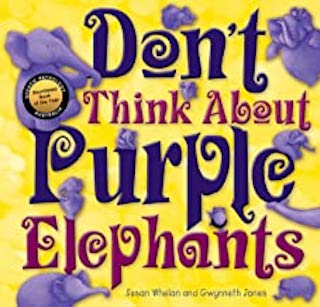 Don't Think About Purple Elephants
Don't Think About Purple Elephants
Susanne Merritt
Don’t Think of Purple Elephants is a fun story addressing nighttime fears. Sophie is always happy during the day but at bedtime she starts to worry about practical things, like not having milk for cereal in the morning. Nighttime worries affect Sophie’s sleep and her daytime functioning. Her family tries to help in different ways until her mom tells her not to think of purple elephants. Sure enough Sophie imagines silly purple elephants until she falls asleep. Getting a good night’s sleep Sophie enjoys her day and decides not to think about blue monkeys the next night. The illustrations add lots of fun and interesting perspective to the story. This book is great for families with children who have trouble sleeping. (RUR)
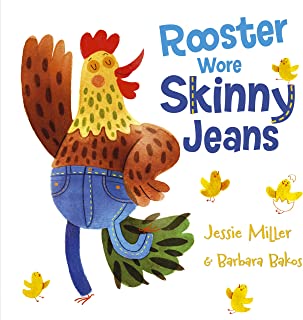 Rooster Wore Skinny Jeans
Rooster Wore Skinny Jeans
Jessie Miller and Barbara Bakos
Rooster in Skinny Jeans tells about Rooster who just received his package with skinny jeans in it. He proudly wore them in front of the other farm animals but they made fun of him. Embarrassed, Rooster hid in the barn. Then he saw himself in the mirror and knew he looked good. With his confidence, his friends’ comments could not hurt him. They were impressed by him. This is a great story with a funny plot and hits all of the high points of understanding emotion. (RULER)
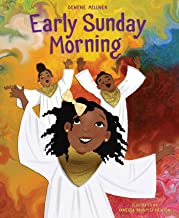 Early Sunday Morning
Early Sunday Morning
Denene Millner and Vanessa Brantley-Newman
Early Sunday Morning is about a little girl who is singing her first solo in the choir on Sunday. She is nervous and heard two kids make a rude comment about her singing. People try to give her advice such as wear a new dress or pretend everyone has a watermelon on their head. In the end, she focuses on her daddy as she sings. This story beautifully and accurately describes a typical black church experience and notes hair care, praise shouts during church, and Sunday dinner. A great story for churches and families. (RLR)
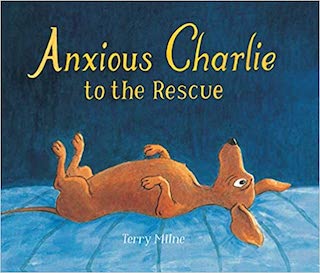 Anxious Charlie To the Rescue
Anxious Charlie To the Rescue
Terry Milne
Anxious Charlie to the Rescue introduces readers to a small dog named Charlie who is dealing with some very big worries. Charlie believes that if he doesn’t follow the same daily routine, something terrible will happen. One morning, Charlie’s routine is interrupted when he learns that his friend is in trouble and needs his help. Charlie’s routine is further interrupted on the way to save his friend causing him further distress. Charlie ultimately saves the day with a simple trick, and our hero and his friends spend the rest of the afternoon playing together where Charlie forgets about his routine and his worries. That night, Charlie realizes that, sometimes, wonderful things happen when you break your routine. This simple and powerful story would be an excellent way to begin a conversation about repetitive behaviors and mental health. (RUL)
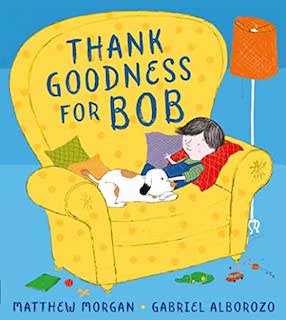 Thank Goodness For Bob
Thank Goodness For Bob
Matthew Morgan and Gabriel Alborozo
This story is about a little boy named Max who worries a lot… everything actually. He wouldn't tell anyone about how fearful and anxious he was because he was worried that his parents were too busy. His dog, Bob, does not worry at all. Max learns that he can tell his dog everything and not be judged and that Bob would always listen to him. The talking helped him release his worries and they floated out of the room, and Bob and Max were able to pop some of the anxiety bubbles. Now he knows that when he gets too overwhelmed all his has to talk about what is bothering him and it makes him feel better. This could be useful to use in younger classrooms to introduce talk therapy and the benefits of sharing your worries. The dog, Bob, is cute and offers some practical advice to Max. (RLER)
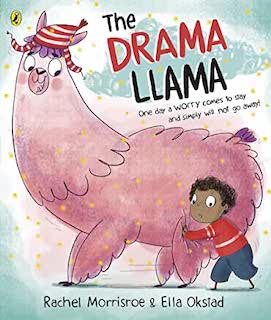 The Drama Llama
The Drama Llama
Rachel Morrisroe and Ella Okstad
Whenever Alex is worried, his brain produces a llama. This llama goes with Alex wherever he goes, and no matter how he tries to get rid of it, the llama keeps by Alex’s side. As his worries grow, so does the llama until one day, the librarian at Alex’s school explains to him that when he’s very worried, he should talk to someone about his worries. Alex talks to her and his llama shrinks. Alex continues to live with his llama but he understands that talking about his worries can control how his llama behaves. This book’s rhyming text and fun illustrations will make a great read-aloud for elementary school students. (RULER)
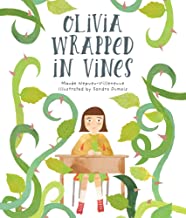 Olivia Wrapped in Vines
Olivia Wrapped in Vines
Maude Nepveu-Villeneuve and Sandra Dumais
Olivia is a girl with a bike and beloved stuffed lion. She also feels like she has vines that wrap around her, making her feel uncomfortable. Things like being late, going to the dentist, and fighting with her friends make the vines grow. When Olivia’s teacher asks what’s wrong, Olivia tells her and they discuss the idea of imagining cutting the vines. Olivia does so and feels a sense of relief from both talking to her teacher and her imaginative exploration. This is a good read-aloud while encouraging students to think about what might “bind” them and how they can cut through those binds. (RULR)
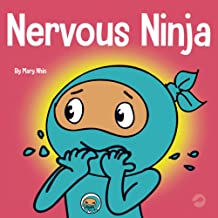 Nervous Ninja
Nervous Ninja
Mary Nhin
Nervous Ninja is about a ninja who can't help but worry. He talks it out with his friend, Caring Ninja and learns some mindfulness strategies that are represented by scoops of ice cream. Each flavor is a different technique and is used to help calm anxiety and ease uncomfortable emotions. I did not love this book for SEL integration. While the strategies are useful, the storyline is a bit jumpy and incohesive. The illustrations are colorful, but very simple and may be confusing to younger readers. I think there are better options for teaching the different mindfulness techniques that include great storylines and illustrations. (RULR)
Worry Ninja
Mary Nhin
Worry Ninja is a book in the Ninja life Hacks series, and is about a ninja who used to worry all the time. The "what if" thoughts consumed their life until Zen Ninja taught some strategies to help manage those negative thoughts. First Zen Ninja taught about identifying the things that Worry Ninja can control (there is an illustration giving some examples) and then after determining if it is controllable, blow the negative thoughts away like a dandelion. Worry Ninja worries no more! The illustrations are bright and colorful, but the storyline is a bit lacking, in my opinion, but may appeal more towards children--I believe it oversimplifies anxiety. This book would be fine in a younger elementary school classroom and perhaps for a family whose child is a worrier by nature. (RULR)
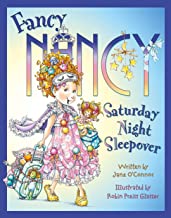 Fancy Nancy: Saturday Night Sleepover
Fancy Nancy: Saturday Night Sleepover
Jane O'Connor and Robin Preiss Glasser
Fancy Nancy: the Saturday Night Sleepover is a fun story about two sisters, Nancy and JoJo, who stay at their neighbor’s house while their parents are away. JoJo is nervous because she’s never slept away from home. Nancy prepares JoJo by rehearsing the sleepover, making a list, and packing in advance. On the night of the sleepover, they have a great time and JoJo falls asleep watching a movie. Nancy finds herself alone and awake. She tries all of the comforts JoJo brought and finally falls asleep when she curls up with JoJo in bed. In this cute story Nancy ends up being the one who needs to use all of the comfort strategies. In the end, it’s being with her sister that brings her the most comfort. The story is great for kids who have a sibling to curl up to in times of need. (RUR)
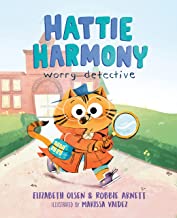 Hattie Harmony, Worry Detective
Hattie Harmony, Worry Detective
Elizabeth Olsen, Robbie Arnett, and Marissa Valdez
It’s the first day of school for Hattie Harmony and her friends. As a worry detective, Hattie is ready to take anyone’s case and soon her friends call on her for help. Through the use of mindful movement, stress balls, mindful breathing and facing their fears, Hattie helps everyone, including herself, through worrisome situations. Readers will enjoy Hattie’s spunk and identify with the worries that she and her friends have. Fun illustrations support this cute story. Great for readalouds. (RULER)
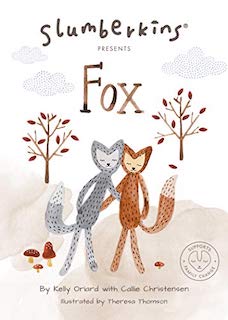 Slumberkins Presents: Fox
Slumberkins Presents: Fox
Kelly Oriard, Callie Christensen, and Teresa Thomson
Fox is a poem addressing feelings around change. The plot is vague, Fox’s family experiences an unknown change. His parents and sister start acting differently. Fox feels angry, confused, and tight in his chest. He starts to misbehave in a few ways. The poem advises talking to someone when a change happens that is beyond your control. The book ends with an affirmation for an adult and child to say together. This book is for adults who want to help children who are struggling through an event beyond their control. (RUER)
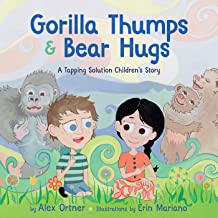 Gorilla Thumps & Bear Hugs: A Tapping Solution Children's Story
Gorilla Thumps & Bear Hugs: A Tapping Solution Children's Story
Alex Ortner and Erin Mariano
In Gorilla Thumps and Bear Hugs Lucas teaches Annabel a technique to use when you want to feel better. This book focuses less on plot and more on the technique of tapping to overcome everyday challenges. This is a great book for parents, psychologists, and teachers to use with children to focus on the body and affirm the mind. (RUR)
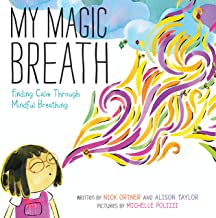 My Magic Breath: Finding Calm Through Mindful Breathing
My Magic Breath: Finding Calm Through Mindful Breathing
Nick Ortner, Alison Taylor, and Michelle Polizzi
My Magic Breath is a children's book that teaches us to find calm through the mindfulness strategy of deep breathing called "magic breathing" in this text. The use of color in this book is both visually appealing and clever. The illustrator uses bright, cheerful colors to represent happiness and muted blue water colors to represent worry, sadness and anger. Through deep breathing the book indicates that you can blow away your uncomfortable feelings and be happy again. I do feel that this book oversimplifies how difficult it can be to redirect thoughts and emotions. It also does not embrace or normalize uncomfortable feelings like worry, anger and sadness. Overall, though, I think this would be a nice addition to any classroom library and is a nice option to integrate into a SEL curriculum. (RLER)
 Everyone Feels Anxious Sometimes
Everyone Feels Anxious Sometimes
Dr. Daniela Owen and Gulce Baycik
This nonfiction picture book is an introduction to anxiety, what it feels like, how it makes us act, and how we might deal with it. The author describes mindfulness techniques and list-making as two approaches to deal with anxiety. The fun, bright illustrations would make this a great book to use to introduce a reader to anxiety. (LR)
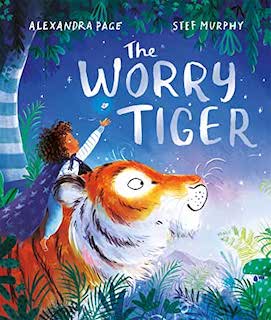 The Worry Tiger
The Worry Tiger
Alexandra Page and Stef Murphy
Tomorrow is show-and-tell and Rory is still awake at bedtime, worrying that he can’t share anything special with his class. Rory gets into his “den,” which is a blanket tent, and notices changes in his room. He looks out and sees a jungle growing and a tiger coming toward him. The tiger offers to show Rory around the jungle and, as she does, she invites him to listen, breathe, and move like a tiger. Doing so calms Rory, so much that when he and the tiger return to his den, he’s ready to go to sleep. In the morning, he draws a picture of his worry tiger to share with his class. This book’s beautiful illustrations help the reader see Rory’s imagination and the author offers “like a tiger” suggestions at the end to help readers practice mindfulness. Great for a read-aloud or individual bedtime read. (RULR)
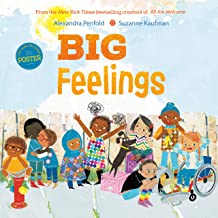 Big Feelings
Big Feelings
Alexandra Penfold and Suzanne Kaufman
As the title suggests, Big Feelings deals with navigating emotions like, anger, frustration, and other complex feelings. The pictures are vibrant and colorful and reflect children of all races and ethnicities. They are age appropriate and reflect the stroy well. I like how the book rhymes, and feel that many children would relate to the overwhelming feelings presented in the text. I don't think this particularly relates to anxiety, though. Regardless, this book is a great addition to a classroom or home library. I think it's valuable for children to see that having big emotions (both positive and those perceived as negative) are normal and there are ways to work through frustrations, anger, etc. (RULER)
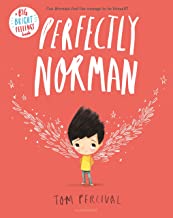 Perfectly Norman
Perfectly Norman
Tom Percival
In Perfectly Norman, Norman thought he was normal until he grew wings. He hid his wings with his coat. The coat made him uncomfortable. Finally, when Norman took off his coat and flew, he realized other children had wings too. There is no such thing as normal. This is a sweet lesson for anyone who feels out of place. Great for families, teachers, and independent readers. (RUR)
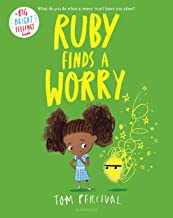 Ruby Finds A Worry
Ruby Finds A Worry
Tom Percival
Things in Ruby's world were going great until one day she found a small worry. At first, this worry was so small she never even noticed it. As the worry grew, it just wouldn't leave her alone. Although no one could see her worry, Ruby knew it was always there getting bigger every day. One day, Ruby stumbled across a young boy with his very own worry that was as big as hers! It was then that Ruby realized that she was not the only person with a growing worry. When she began talking about her worry, it grew smaller and smaller. She was so excited to know that her worry was small again and all because she decided to talk about her worry to others. Ruby Finds A Worry does a great job giving a simple illustration to worry and giving readers a visual for a very abstract idea. This book would be great to read with younger elementary students ages 5-8 to discuss what happens when they let their worry overtake their thoughts and to show them how well talking with others can help reduce the size of their worry. (RUR)
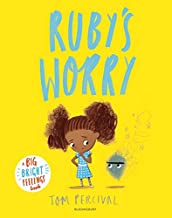 Ruby's Worry
Ruby's Worry
Tom Percival
One day, Ruby found a worry while doing one of her favorite things, exploring outside. The worry was little and at first Ruby didn't notice the worry. The worry did not cause Ruby problems until it grew...and grew...and grew until it took up all the thoughts around her. One day, Ruby met a friend who had is own worry and together they worked together to talk about their worry and make their worry smaller. Ruby's Worry does a great job giving a simple illustration to worry and giving readers a visual for a very abstract idea. This book would be great to read with younger elementary students ages 5-8 to discuss what happens when they let their worry overtake their thoughts and to show them how well talking with others can help reduce the size of their worry. (RUR)
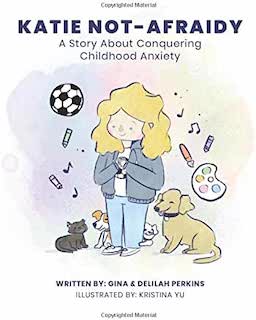 Katie Not-Afraidy: A Story About Conquering Childhood Anxiety
Katie Not-Afraidy: A Story About Conquering Childhood Anxiety
Gina M Perkins, Delilah Perkins, Kimberly Graves, and Kristina Yu
Katie used to be afraid all the time. She had an amazing Truth Queen that always told her the truth and some mean Story Bugs that told Katie lies that upset her. When those Story Bugs started upsetting her, Katie used her Worry Box and some other techniques to calm her anxiety so she could sleep well and experience all that life had to offer. Katie Not-Afraidy is a great book to introduce school aged children, ages 6-8, to a variety of techniques that can be used to manage generalized anxiety. This story has a mini-workbook built into the end of the book and can be used to guide discussions, build a worry box, and help students reflect on what they worry about and how they can begin to squash the Story Bugs and create their own Truth Queen (or King). (RULR)
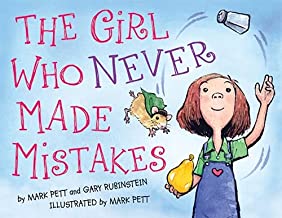 The Girl Who Never Made Mistakes
The Girl Who Never Made Mistakes
Mark Pett and Gary Rubenstein
The Girl Who Never Made Mistakes is a wonderful demonstration of growth mindset. Beatrice does all sorts of things perfectly. Until, one day, she almost made a mistake. It bothered her. She began to worry about making mistakes and stayed away from fun activities for fear of making a mistake. During her juggling act at the talent show, she did make a mistake, in front of everyone. There was a moment when she wasn’t sure how to handle it but she decided to laugh. The audience was free to laugh. After that, Beatrice felt comfortable to take risks and make mistakes. A great story about the importance of perseverance, risk taking, and imperfection. Perfect for all reading settings. (RUR)
 Black Dog
Black Dog
Levi Pinfold
Black Dog is a beautiful picture book that abstractly addresses facing your fears. There is a black dog outside. As each person in the Hope family sees it, the dog gets bigger. While the rest of the family hides from the dog, Small, the smallest family member, goes outside to face it. As Small runs with the dog, it begins to shrink until Small and the dog fit through the cat door at home. The family realized there was nothing to fear. This is a very simple story with fun illustrations. There are spots of humor in what could be scary text. This book would be great for parent-child lap reading. (L)
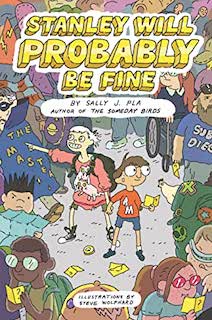 Stanley Will Probably Be Fine
Stanley Will Probably Be Fine
Sally J. Pla and Steve Wolfhard
Stanley Will Probably Be Fine is a fantastic story that follows how Stanley has to overcome his anxiety that is starting to completely overwhelm his daily life in middle school. After Stanley faints during an assembly, he embarks on a journey to redefine himself as a bold and brave superhero ready to conquer whatever comes his way. Stanley's tale is empowering to anyone struggling with anxiety and sensory processing disorder. This book would be best suited for use with older elementary/middle school students, ages 10-12. This is a chapter book and would be great to use with students who may "feel different" or having troubles adjusting to life in middle school. (RULER)
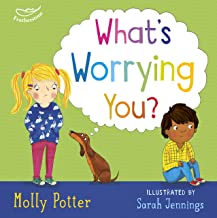 What's Worrying You: A Mindful Picture Book to Help Small Children Overcome Big Worries
What's Worrying You: A Mindful Picture Book to Help Small Children Overcome Big Worries
Molly Potter and Sarah Jennings
What's Worrying You? takes a unique approach to helping young readers understand their worry and other feelings during events that they may encounter. Each event that the text explains provides readers with how they may feel, thinking, and different things to remember while confronting their worry in each situation. This text also has a wide variety of support materials that are provided for both the young reader and the adult experiencing the text with them. This book would be great to use when young readers from ages 5-8 that have a specific worry that comes up. The text is set up to be easy to use and does not need to be read all in one setting. (RULR)
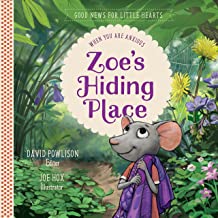 Zoe’s Hiding Place: When You Are Anxious
Zoe’s Hiding Place: When You Are Anxious
David Powlison and Joe Hox
Zoe’s teacher announces that their class will be visiting the art museum again, which makes Zoe very anxious, as she got lost on their last visit. She tells Mama about her fears and Mama urges Zoe to give it a try. Mama also says that God is always with her and encourages Zoe to pray when she’s feeling anxious. Zoe visits the museum with her class and gets lost again. This time, she prays for help and then remembers where she’s supposed to meet her class. The concluding pages include tips for how to help children with anxiety from a Christian perspective. Fun, colorful illustrations enhance and support the story. Good for an individual or group read-aloud. (RULER)
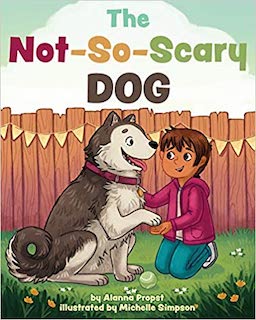 The Not-So-Scary Dog
The Not-So-Scary Dog
Alana Propst, M.D. and Michelle Simpson
Tommy has been invited to a birthday party at his friend’s house but insists to his mother that he can’t go because his friend has a dog whose “teeth are long and sharp like swords” and who is “eight feet tall.” To help Tommy overcome his fear of dogs, his mother works him through exposure technique to gradually get Tommy used to dogs. Through rhyming text and brightly-colored illustrations, the reader sees Tommy overcome his anxiety enough to enjoy both his friend’s party and his friend’s dog. The author concludes with information about anxiety, exposure therapy and tips as to how to enhance the reading experience with children. (RULR)
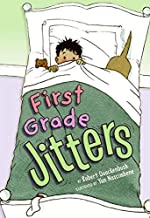 First Grade Jitters
First Grade Jitters
Robert Quackenbush and Yan Nascimbene
First Grade Jitters is about Aiden who is getting ready to go to first grade. Initially, he does not acknowledge his fear is causing him not to eat or throw a tantrum in a store. He finally admits to himself he is scared because he hasn’t heard from his friends all summer and he may not understand the teacher. Aiden tells his mom his leg hurts. His three friends call once they return from vacation. As they play, Tammy mentions that she met the teacher at the grocery store and she is really nice. Aiden becomes excited for school. In this story, Aiden is not in tune with the cause of his “jitters” or how he was recovered. The reader is left to infer why Aiden feels the way he does. Overcoming the fear is less clear, but someone going to first grade may still identify with surface level nerves. (Does not reflect RULER)
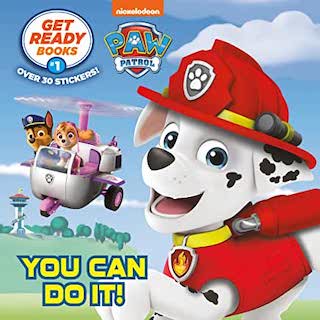 Paw Patrol: You Can Do It!
Paw Patrol: You Can Do It!
Random House
The Paw Patrol gang rescues a gosling, Fuzzy, who has been separated from its flock. When it’s time for Fuzzy to rejoin his flock, the members of the Paw Patrol want to fly a bit of the way with him but Marshall is scared of flying. Some of the Patrol members share things that they’re afraid of but get through their fear when the rest of the team needs help. Hearing that, Marshall decides to give flying a try and Ryder adds that it’s always good to talk about fears. Marshall ultimately flies for a bit with the rest of the team and Fuzzy and finds he even likes it. This is a nice story about how everyone has fears and would be of high-interest to Paw Patrol fans. (RULR)
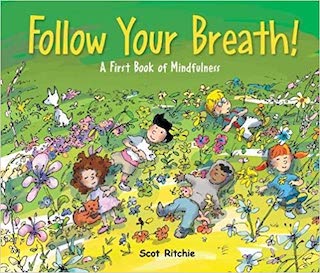 Follow Your Breath! A First Book of Mindfullness
Follow Your Breath! A First Book of Mindfullness
Scot Ritchie
Follow Your Breath is an introductory book into mindfulness activities. There are 14 different minfulness activities presented throughout the text. The book is full of brightly colored illustrations that are an accurate reflection of the information that is presented in the text. The book follows a group of friends who are learning how to manage emotions and deal with different situations that may cause anxiety and disappointment. In my opinion, this doesn't read as a story, but more as a How-to guide for younger kids. The information in the book is useful and could possibly be an SEL text for counselors and teachers to use with students. I do think that older elementary students may find this book a bit cheesy. (RULER)
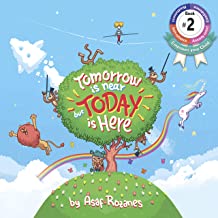 Tomorrow Is Near But Today Is Here
Tomorrow Is Near But Today Is Here
Asaf Rozanes
Tomorrow is Near But Today is Here is about Mia who misses out a lot in life because she worries too much. Her dad tells her to think of the good of tomorrow. Written with the intention of coaching children through problems, the dad gets Mia to start focusing on the present to appreciate life and stop worrying. This book has a fun rhyme scheme but contrived plot with little solution other than to think positively. The intentions are good for families and counselors of children ages 4-7. (RUR)
 Silenzio, Bruno! When In Doubt, Shout It Out!
Silenzio, Bruno! When In Doubt, Shout It Out!
Meredith Rusu and Giovanni Rigano
This book was inspired by the Disney film, Luca. The characters Alberto and Luca deal with various anxious feelings throughout the story. Alberto is different from other sea monsters and finds himself feeling nervous about his quirks. When he gets overwhelmed he yells, "Silenzio Bruno!" to chase the nervous feelings away. He teaches his friend Luca to do the same while tackling various new activities. The illustrations are colorful and capitalize on the film's success, but I don't think this book has much "meat" when it comes to helping children deal with anxious feelings. The characters never acknowledge that anxious feelings are okay and sometimes even helpful. I believe the book suggests that ignoring the uneasy feelings someone has or shouting them away is a cure-all for anxiety. (Does not reflect RULER)
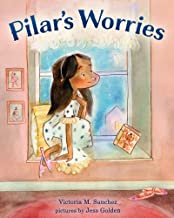 Pilar's Worries
Pilar's Worries
Victoria M. Sanchez and Jess Golden
Pilar’s Worries address a young ballerina who is nervous about auditions. Her nerves cause her to panic over small things during the school day. Her ballet friend, Sebastian, reminds her to breathe. Pilar’s mom advises her when she’s doing something she loves the good feelings are so big it makes the bad feelings feel small. Pilar auditions and gets a part as a snowflake in the ballet. Pilar is culturally androgenous and Sebastian is breaking gender norms as a boy in ballet. The language can be clunky at times but does a great job modeling how to use tools for calming nerves, especially describing the kinesthetic joy of movement. Great for young dancers, anyone with stage fright, and families of worriers. (RUER)
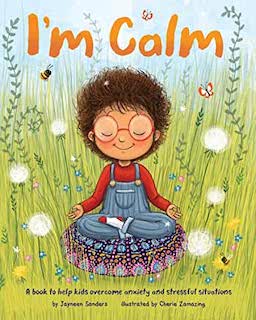 I'm Calm
I'm Calm
Jayneen Sanders and Cherie Zamazing
I'm Calm follows a young boy who shares all the things around the home that have made him anxious in the past. At school, he learned about deep breathing, yoga, and nature walks with trusted adults to calm down. He shows how he uses these techniques and shares his calm with his family members to help them calm down. This story would be great for school aged children, ages 4-6, to begin discussions about how to manage and calm down when there is lots of stress and anxiety at home. This look into a non-nuclear family can help children understand that every family can be a little chaotic and the importance of having a toolbox of ways to calm down when feeling overwhelmed. (RULER)
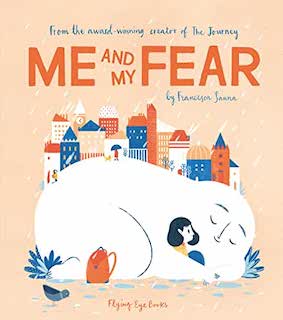 Me And My Fear
Me And My Fear
Francesca Sanna
Me and My Fear follows a young girl as she moves to a new school in a new country. As she begins this new journey, the fear she has had for a very long time begins to grow. It grows and grows until it is so big it won't let her move and do what she wants. The young girl begins to feel lonely and trapped by her fear until a young boy in her class invites her to draw and paint together. As their friendship grows, the young girl that her new friend has a secret fear just like her. As they talk about their fears, the fears get smaller and smaller and the young girl is able to enjoy her new country and school. This book would be great to use with school aged children, ages 6-8, and would be a great resource to use with students who are starting a new school or have recently moved from another country. This discussion about the fear of moving to a new school could generate conversations to help children adjust. (RUR)
After the Fall
Dan Santant
Humpty Dumpty had a great fall, that is true, but how would the story have changed if All the King’s Men were able to put Humpty back together again? In After the Fall: How Humpty Dumpty Got Back Up Again, we follow the story of Humpty Dumpty and how he begins handling life after this experience. After his fall, Humpty was just not the same. He tried finding other things to enjoy, but the fear of falling kept him from some of his favorite things and he could never shake the feeling that another accident could happen. When Humpty gets bold enough to get back up on the wall, he discovers something truly remarkable. Something that was just under the surface waiting to burst forward the whole time! This unique story is an incredible tale to use with children 5 to 8. Readers connect with Humpty and sympathize with his sad story and can celebrate with him when he overcomes his challenges and discovers something new about himself...something that was always inside. (RULR)
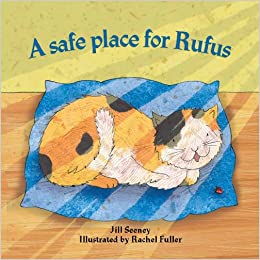 A Safe Place for Rufus
A Safe Place for Rufus
Jill Seeney
A Safe Place for Rufus introduces readers to a cat named Rufus who got off to a rough start as a kitten with a family that mistreated and neglected him. When he finally makes it to the home of a kind and gentle family, he is initially unable to cope with his fears and exhibits angry feelings toward his new family. While trying to escape from his bad memories, Rufus finds a blue cushion in the sun that makes him feel safe. After finding this safe space, Rufus begins to show love to his new family knowing he can return to the safety of his blue cushion whenever he needs to. This book would be a gentle way to approach students coming from abusive or neglectful homes who, like Rufus, may be struggling with the uncertainties of a new home. Book also includes an excellent guide on best ways to use the book with children. (RULER)
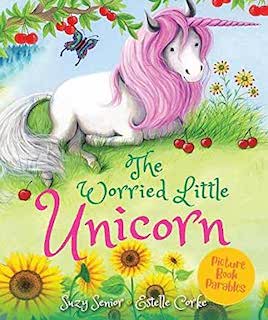 The Worried Little Unicorn
The Worried Little Unicorn
Suzy Senior and Estelle Corke
The Little Unicorn wanted to play with her friends - they were doing so many fun things - but she kept thinking of “what ifs” that held her back. Finally, Big Unicorn asked her why she wasn’t playing and Little Unicorn talked about what made her anxious. Big Unicorn suggested that she talk about her anxieties because that helps but also to trust in God who made them and cares about them. Little Unicorn agrees and leaves to play with her friends. Those children who love unicorns will be enamored with the illustrations in this book. (RR)
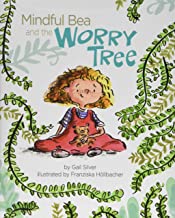 Mindful Bea and the Worry Tree
Mindful Bea and the Worry Tree
Gail Silver and Franziska Hollbacher
Mindful Bea and the Worry Tree is about a little girl who is getting ready to celebrate her birthday with a party, but is crippled by anxiety. She keeps picturing the worst-case scenarios that could happen at the party. Her anxiety is represented by a gnarly willow tree that keeps spreading throughout her home and her life. Using deep breathing and mindfulness activities (she looks like she is meditating in several of the illustrations) she is able to regain control of her thoughts and begins to enjoy her friends and her party. The best part, and most useful, is the message to caregivers at the end of the book. There are very clear and informative notes on how to help children, understanding anxiety and how it impacts children and when to seek professional help for a young child. The Story could have done a better job at telling kids that its normal and okay to be anxious, but you can deal with it by practicing mindfulness strategies. (RUR)
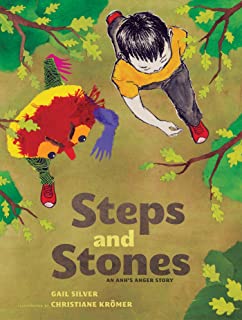 Steps and Stones: An Ahn’s Anger Story
Steps and Stones: An Ahn’s Anger Story
Gail Silver and Christiane Kromer
Steps and Stones is about a boy named Ahn who became angry at his friends when they didn’t want to dig in the dirt during recess. Anger personified starts talking him into being mean to his friends to get back at them. As they are walking to take revenge, Ahn slows down, starts to count his steps, and take breaths. Anger can’t keep up and has to stop. By the time Ahn gets to his friends, he is no longer angry and is able to talk calmly to his friends about his feelings. This picture book is a combination of great plot and anger strategies. (RULR)
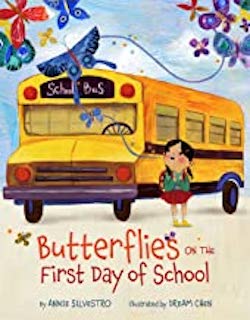 Butterflies On The First Day of School
Butterflies On The First Day of School
Annie Silvestro and Dream Chen
Butterflies on the First Day of School is a sweet story addressing nervous feelings on the first day of school. Rosie is excited about attending school for the first time, but her stomach starts to hurt. Rosie’s dad tells her she just has butterflies in her belly. On the bus she meets a friend, Violet. As Rosie goes through her day, the butterflies escape through Rosie's words and she starts to feel better. At the climax, Rosie helps Isabella get rid of her butterflies. It is a great way to show Rosie’s confidence and the ability people have to help each other. A classic first day of school book about how to handle nerves. While Rosie never identifies with the emotion of nervousness, she does physically start to feel better as she interacts with more people. This book is ideal for tentative kindergarteners on their first day of school. (RU)
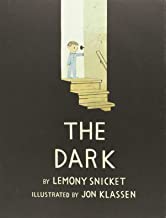 The Dark
The Dark
Lemony Snicket and Jon Klassen
The Dark is a touching story about young Lazlo and how he conquered his fear of the dark. Lazlo lived in the same house as the dark and everything was fine until the dark came to visit Lazlo in his room unexpectedly. Instead of getting upset, Lazlo listened to the dark and after visiting the dark in the basement, the dark gave Lazlo what he needed to conquer his fear. From then on, Lazlo was not afraid of the dark. This story would be a great resource for helping young readers understand that the dark does not have to be scary. The illustrations show a few resources that Lazlo used to help conquer his fear of the dark. (RUR)
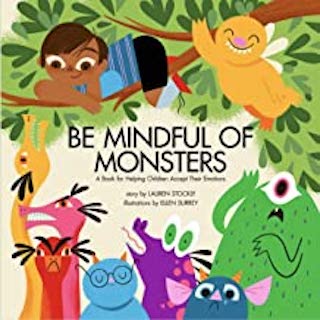 Be Mindful of Monsters
Be Mindful of Monsters
Lauren Stockly and Ellen Surrey
This book is a great read explaining to children how to control the power of various emotions. Each feeling is represented by a different monster and the main character, Ezzy, learns how to listen to and tame his big feelings by reaching out for help, talking to a trusted adult and using mindfulness strategies; controlled breathing, writing, drawing, 5 senses activites, etc. This is an engaging book with colorful monsters, a good storyline and a age-appropriate way to introduce accepting and adapting to anxiety.(RULER)
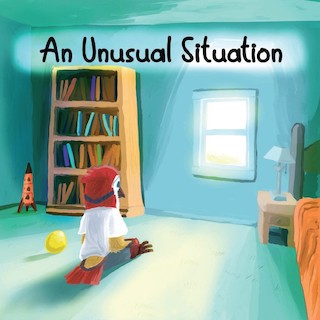 An Unusual Situation
An Unusual Situation
Cassandra Surinon, David Folk, and Max Zurlini
The book opens with Milo living through a “very unusual situation” and he doesn’t understand what’s going on. He sees that his parents are just as upset as he is but doesn’t know why. After experiencing feelings of anger, frustration, and anxiety, Milo and his sister decide to ask their parents about what is going on and how they feel. Milo’s parents’ listen to them and talk through this unusual situation. Milo suggests things they can do as a family that might make him feel better and they do it. The story concludes with Milo realizing that talking to his parents about his feelings can help him cope with them. (RULER)
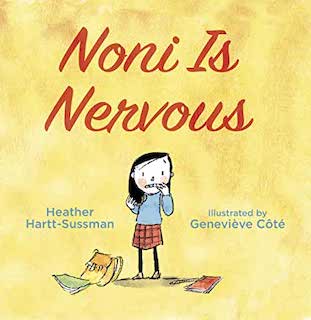 Noni Is Nervous
Noni Is Nervous
Heather Hartt-Sussman and Geneviève Côté
Noni knows she can be nervous, however when she starts school for the first time, Noni's is extra nervous! After the first day, Noni's nerves kept her from remembering anything about her first day. On her second day, Noni still twisted her hair and bit her nails, but this time, Noni met Briar and Briar introduced her to new friends that help her become calm and enjoy her time at school. Noni is Nervous is a great read aloud and discussion starter to use for young children, ages 5-7, who are beginning school for the first time or even for students who may be starting a new school for the first time. This read aloud would be a great way to launch getting to know you activities or brainstorming ways to calm nerves when experiencing something new and different. (RULE)
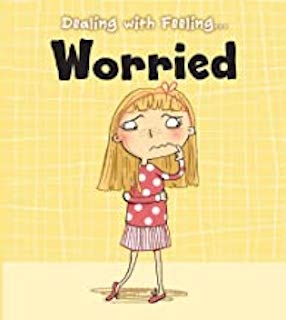 Dealing with Feeling...Worried
Dealing with Feeling...Worried
Isabele Thomas and Clare Elsom
Dealing with Feeling...Worried takes a detailed approach to explaining what it means to be worried. This nonfiction book takes a look at what worried means and also helps readers understand what it looks like when others around them are worried. It also goes into detail about the importance of discussing with others about the worry readers are feeling and provides the worry toolbox to give ideas on overcoming worry. This text will be an incredible resource as a whole or in parts to support school aged readers as they understand and label worry as a normal feeling and practice to overcome the worry that they may feel.
(RULR)
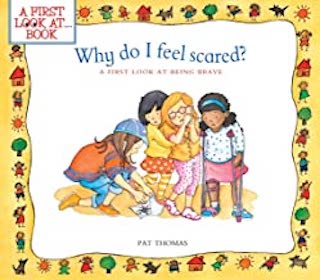 Why Do I Feel Scared? A First Look at Being Brave
Why Do I Feel Scared? A First Look at Being Brave
Pat Thomas and Lesley Harker
Why Do I Feel Scared is a nonfiction book that helps young readers realize that being brave is something they can do themselves and not just something for adults or the movies. Various situations are illustrated and explained in a way that young readers can see how brave they can truly be. This book would be great for building self confidence and courage in children. At the end, there is a helpful resource section that offers ways to use the book, as well as some other resources. Text is dated, but still relatable. (RLER)
 A Hockey Story
A Hockey Story
Richard Torrey
Joey loves to play hockey but he’s starting to play with a new team today. His stomach hurts because he has a lot of “what if” questions about how the first practice is going to go. His parents go with him to help him get his gear on and then he goes out on the ice and finds that playing with his new team is fun and he’s making new friends. Kids who enjoy sports will identify with the anticipation and anxiety of getting ready to start playing with a new team. Joey’s approach to coping with his anxiety is to try, which works out well for him. A good read for lower elementary-aged kids. (RULR)
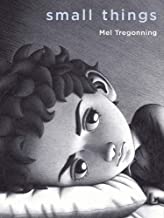 Small Things
Small Things
Mel Tregonning
Small Things is a wordless graphic picture book with powerful examples of how small kindnesses can save us all because we all have our own struggles. The main character starts to crack when he has multiple failures in a row. To him, everyone else is doing great and he is struggling. Just as it becomes too much, his sister shows him that she too struggles. Then he is able to ask his parents for help and see that everyone has their own struggles. He even starts to pay the kindness forward. This book speaks very loudly without saying anything. Young readers may need guidance to fully understand the story but the illustrations do all of the talking with shadows and cracks. (RUER)
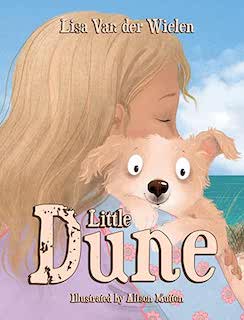 Little Dune
Little Dune
Lisa Van der Wielen and Alison Mutton
Grace loved going to the beach but she was afraid to get into the water because of the unknowns under the waves. Her mother teaches her a song she can sing to herself to help her be brave, but Grace continues to prefer to stay in the sand while her family plays in the ocean. One day, while she’s sitting on the beach she finds an abandoned puppy. Grace’s mother agrees to take the puppy to the vet to get it checked out. The vet gives the puppy a clear health check and Grace gets to adopt the puppy, whom she names Dune. When they get home, Grace takes Dune to the edge of the ocean. Dune is scared of the water but Grace sings the song her mother taught her. The reader doesn’t see either character enter the water. While the author’s intentions are clearly supportive of using empowering mantras, the story is most compelling when focused on the relationship between Grace and Dune which did not seem to have anything to do with anxiety. (RULR)
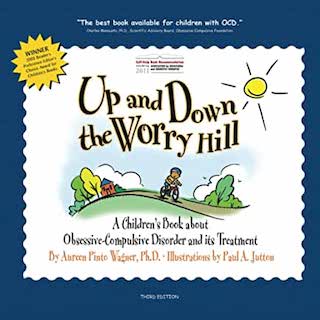 Up and Down The Worry Hill
Up and Down The Worry Hill
Aureen Pinto Wagner and Paul A. Jutton
Up and Down the Worry Tree is a story that can help parents and children dealing with Obsessive Compulsive Disorder. The forward to parents and caregivers is a very useful component and offers insight into the book. A drawback of this story is that the illustrations are devoid of color and simple. I believe the book would be more universal if the illustrations were geared more towards younger viewers/readers. The story is told from the perspective of Casey, a little boy who is diagnosed with OCD. He has to wear particular clothing, count the stairs repeatedly and perform other daily rituals in order to get through his day. With the help of his parents and a clinical psychologist, Casey is able to manage some of his compulsions. This book could be used in upper elementary classrooms to help students understand classmates diagnosed with OCD or to explain to siblings about the challenges of having OCD. (RULER)
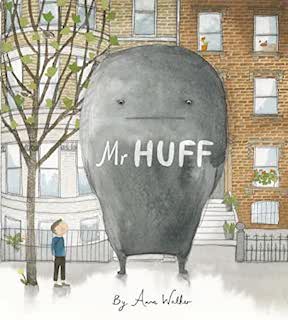 Mr. Huff
Mr. Huff
Anna Walker
Bill was having a rotten day and it began when he couldn't find his favorite socks. After tripping over his backpack and having to walk in the rain, it seemed Bill had picked up Mr. Huff along the way. Mr. Huff tagged along wherever Bill went and kept Bill in a rotten mood. When Bill realized the power Mr. Huff had on his bad attitude, he decided to take some time and pause to focus on the fun things around him. In Mr. Huff, Bill shows how one small action can send a whole day into a bad mood. This would be a great read aloud for school aged students, ages 6-8, that need help realizing that bad moods happen, but they don't have to stay. This story would be great to help students visualize a bad mood, like Mr. Huff, and what they can do to regulate the bad mood. The illustration of Mr. Huff and how he impacts Bill are great for conversations with children struggling with managing bad moods. (RUR)
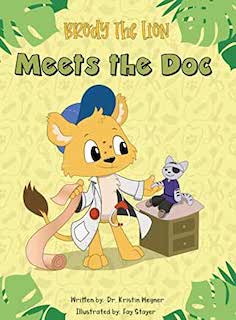 Brody The Lion Meets The Doc
Brody The Lion Meets The Doc
Dr. Kristin Weneer and Fay Stayer
Brody knows that after his birthday he will need to visit the doctor for his annual check-up. After practicing what it would be like to be examined by a doctor, Brody actually visits the clinic. He utilizes a breathing technique and mantra to help calm his nerves. He does what he practiced previously and the visit is a success. This book is part of a series of Brody The Lion books that feature stories about characters with different abilities, namely Brody who has autism. Adults will need to help new Brody readers understand that characters, such as Bear, have specific disabilities such as being nonverbal. Readers of this particular title may be confused with references to characters to whom, unless already familiar with the series, they will not yet have been introduced. Stayer’s illustrations are fun and cartoonish, which will appeal to kids. (RULER)
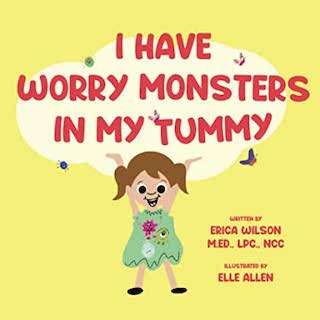 I Have Worry Monsters in My Tummy
I Have Worry Monsters in My Tummy
Erica Wilson and Elle Allen
This book centers on a girl named Addie who has worry monsters in her tummy. They aren’t always there but when they are, they make her feel unwell and unsafe. Addie talks to her mom about her worry monsters and her mom suggests that Addie should journal and talk to trusted adults about what makes her worried. Addie now feels confident enough to get rid of her worry monsters when they come around. The narrative offers a good discussion of how anxiety can make one feel, when they might feel it, and approaches to dealing with it. Despite this, the illustrations don’t always seem to appropriately depict how Addie is feeling. For example, the same smiling image of Addie is used to first introduce the fact that she has worry monsters and then again to depict her confidence in dealing with them. Additionally, Addie and her mother are the only characters who have features that are illustrated in a sophisticated manner. Her friends, all of whom are non-white, are illustrated in a more childlike fashion. (RLER)
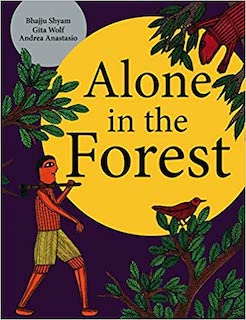 Alone In the Forest
Alone In the Forest
Gita Wolf, Andrea Anastasio, Bajju Shyam
Alone in the Forest is an intricately and beautifully illustrated book that tells the story of a young boy named Masu who sets out into the forest to gather wood when his mother is unable. After declaring he is old enough and big enough to accomplish this task, he begins his journey. Frightened by a loud crack and boom in the forest, Masu seeks shelter in the hollow of a tree to await all the monsters he has created as he hides in the tree. Once his heart calms, Masu realizes that no terrible things have transpired and he can return to the safety of his village. A critical part of this story is the detail of the illustrations. The reader sees the forest through Masu’s illustrated eye. The illustrations set the perfect tone to transport the reader into Masu’s fears. While kids may not realize the wild boars are only in Masu’s head, they will be able to understand clearly his very physical reaction to this kind of fear. (RUL)
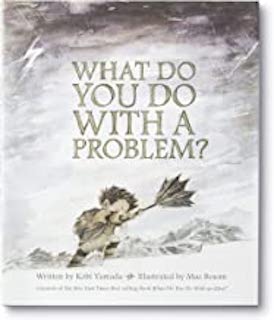 What Do You Do With a Problem?
What Do You Do With a Problem?
Kobi Yamada and Mae Besom
Problems can sometimes be very overwhelming. They can grow and grow until it feels like the problem will just swallow you up! In What Do You Do With a Problem?, readers get to see how problems can grow and grow. Problems can grow to be a dark gloomy cloud hanging over you until you tackle the problem...only to find that inside the problem is a beautiful opportunity! This book is a great look at how readers can let a problem grow and grow. This text would be a great conversation starter for recognizing problems and flipping readers' mindsets to see problems as opportunities! (RUR)
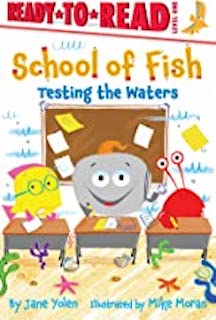 School of Fish: Testing the Waters
School of Fish: Testing the Waters
Jane Yolen and Mike Moran
School of Fish: Testing the Waters is "A Ready To Read" book, written by Jane Yolen. This story is about a young fish who is preparing to take a big swim test. He experiences testing anxiety (as do his classmates) and learns to manage the anxious feelings ( tummy swirling and whirling and tears) by counting and breathing. The pages are colorful and the characters' expressions and body language help portray how each fish is feeling. The illustrations and rhymes make this an easy book for early readers and may help younger students identify and understand testing anxiety and what that entails. There are however, many other books that I feel would be more beneficial for kids, as this is a very superficial way to cope with testing anxiety. (RER)
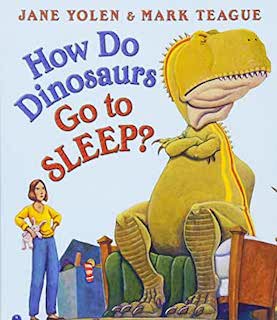 Go To Sleep Dinosaurs
Go To Sleep Dinosaurs
Jane Yolen and Mark Teague
Albert loves his dinosaurs and can name them all, however, as he gets ready to fall asleep, he notices gray dinosaurs come out and frightens him. After a quick talk with his mom and getting a special tool to combat the gray dinosaurs, Albert returns and is able to cage the dinosaurs so he can go to bed. Go To Sleep Dinosaurs is a charming tale that would be great to share with preschool aged children, ages 4-6. This story would be very impactful to use with children who love dinosaurs or children specifically struggling with shadows scaring them in the dark. This text would be great to begin conversations about it being okay to be afraid of the dark, but also how to be brave like Albert to get rid of the dinosaur shadows. (RUER)
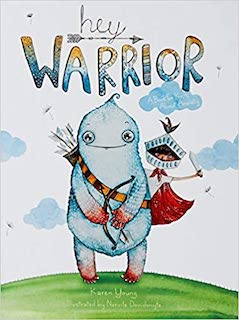
Hey, Warrior
Karen Young
Speaking directly to the reader, this title offers an accessible scientific explanation of the bodily processes that we call anxiety. It introduces the amygdala as a brave warrior who helps protect you, but who also sometimes overacts, perceiving danger where none really exists. The physical signs of anxiety are described, including breathlessness, blushing, and confusion, and we are encouraged to communicate with the warrior in our brains when we sense these indicators. We can help to calm the warrior down with reflection, deep breathing, and “powerful thoughts.” The gentle illustrations help readers to visualize the explanations that are provided in the text while sustaining a calm, inviting tone. The amygdala is portrayed as a big furry creature with an endearing, friendly face, suggesting that while this part of ourselves has capacity to be fierce and strong, it isn’t our enemy and actually has our best interest at heart. This versatile volume can be used in classrooms, libraries, counseling sessions, and one on one, with readers and listeners ages 6 and up. (RULR)
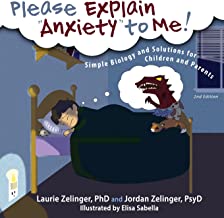 Please Explain "Anxiety" to Me!: Simple Biology and Solutions for Children and Parents
Please Explain "Anxiety" to Me!: Simple Biology and Solutions for Children and Parents
Laurie E. Zelinger, Jordan Zelinger, and Elisa Sabella
Anxiety can be kind of scary, but not nearly as scary as dinosaurs. In Please Explain "Anxiety" to Me, dinosaurs are used to help explain the "freeze, flight, or fight" concept in a simple way. Illustrations and text work together to explain internal imaginary switches that are turned on when anxious feelings show up. This story does a great job of explaining the science behind anxiety in simple and easy to use terms and illustrations. This text would be beneficial to children ages 6-8 that are interested in WHY they feel anxious. The calming techniques demonstrated in the book are great to introduce to children. (RULR)
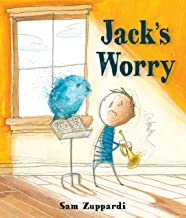 Jack's Worry
Jack's Worry
Sam Zuppardi
Jack’s Worry is about a boy who is getting ready for his first trumpet concert. The Worry is personified and follows Jack around, getting bigger, while Jack tries to ignore it by doing things he loves. When it is time to leave for the concert the Worry is too big and Jack bursts into tears. He tells his mom he is worried he will make a mistake and she won’t love him anymore. Jack’s mom affirms and encourages him. At the concert, Jack is able to help the other students overcome their worries as well. The illustrations are captivating showing the contrast of Jack’s emotions and the Worry as it takes over the page. A great story about anticipating an event and overcoming perfectionism. (RULR)
***All images courtesy of Amazon.com
